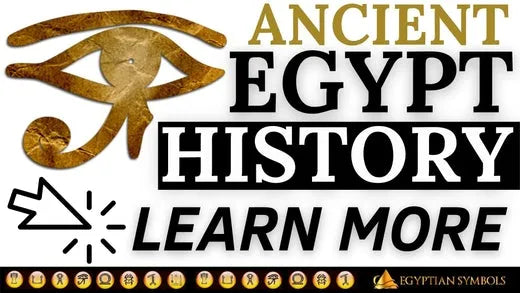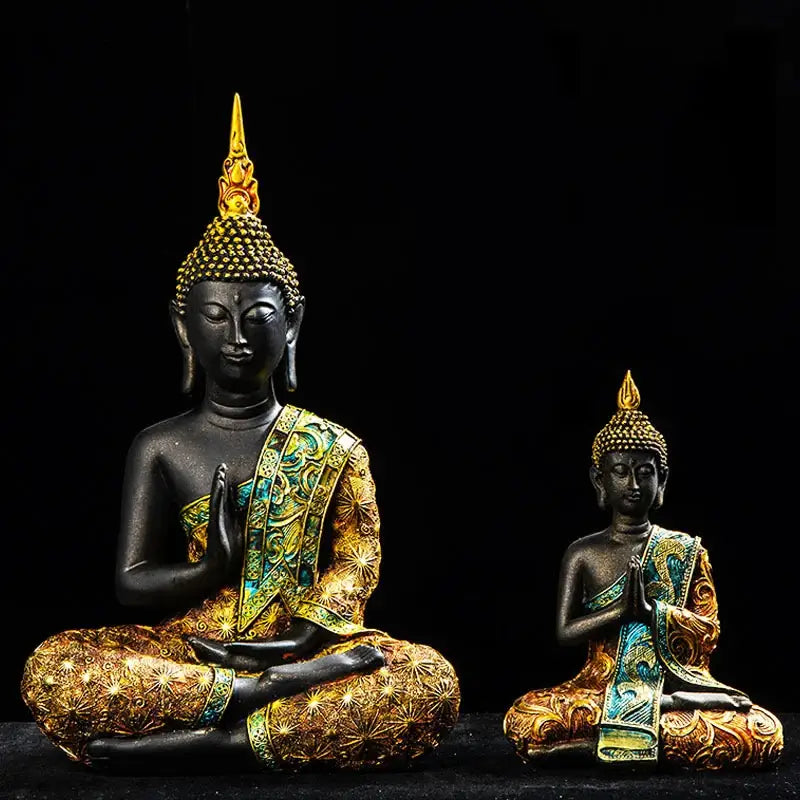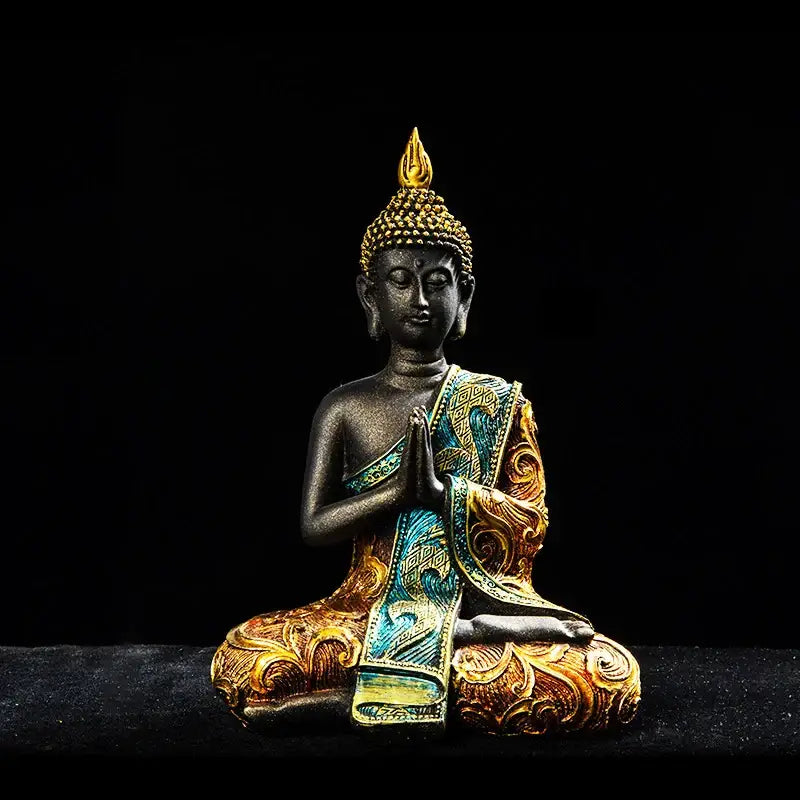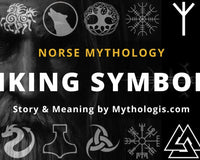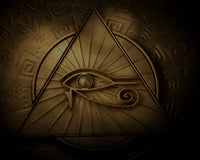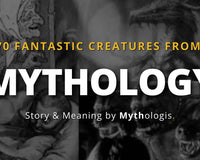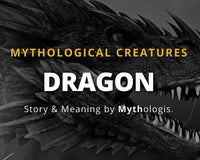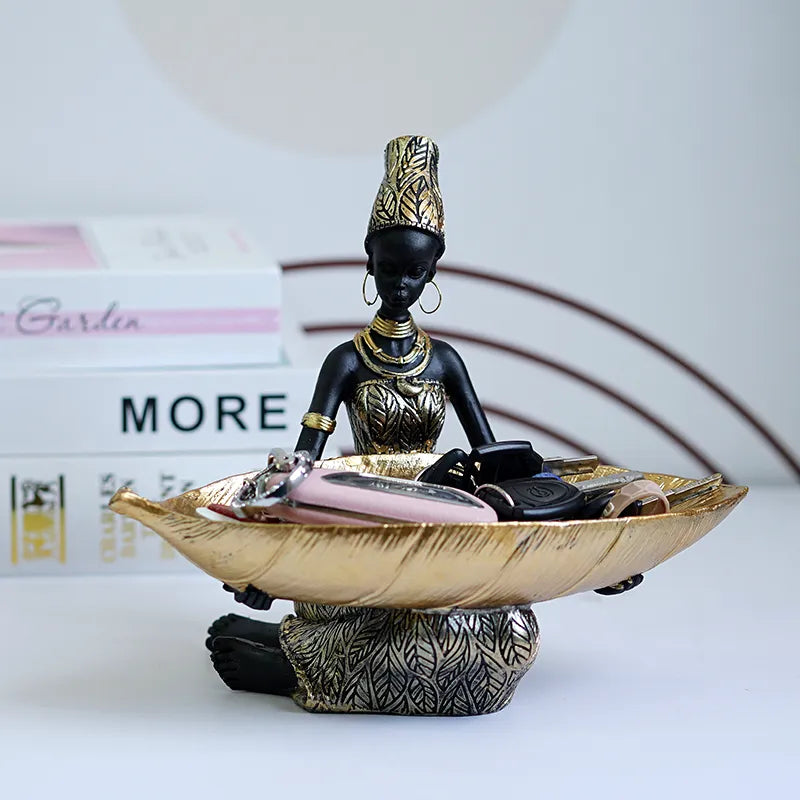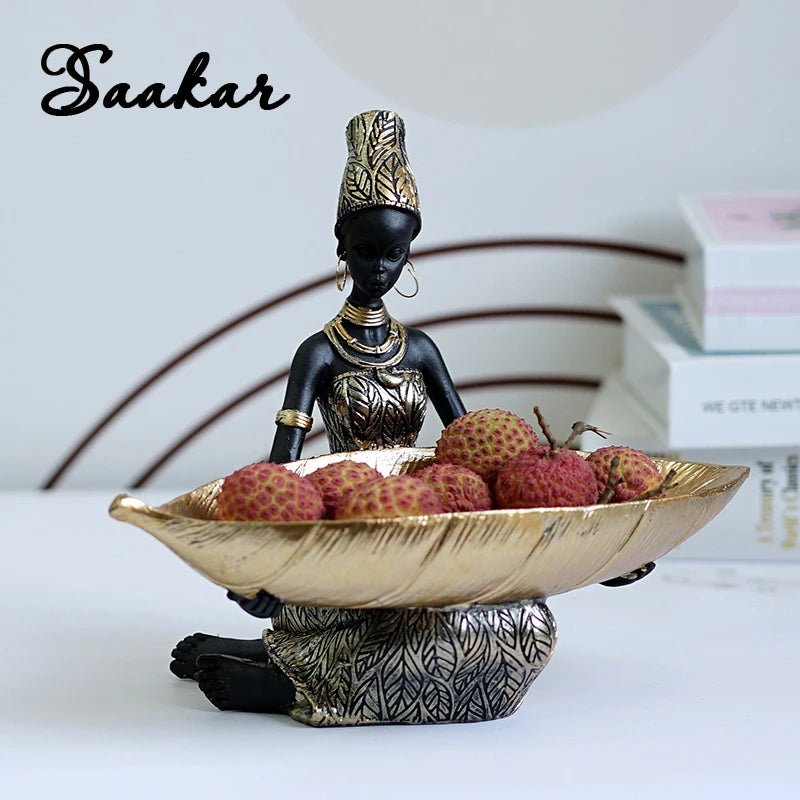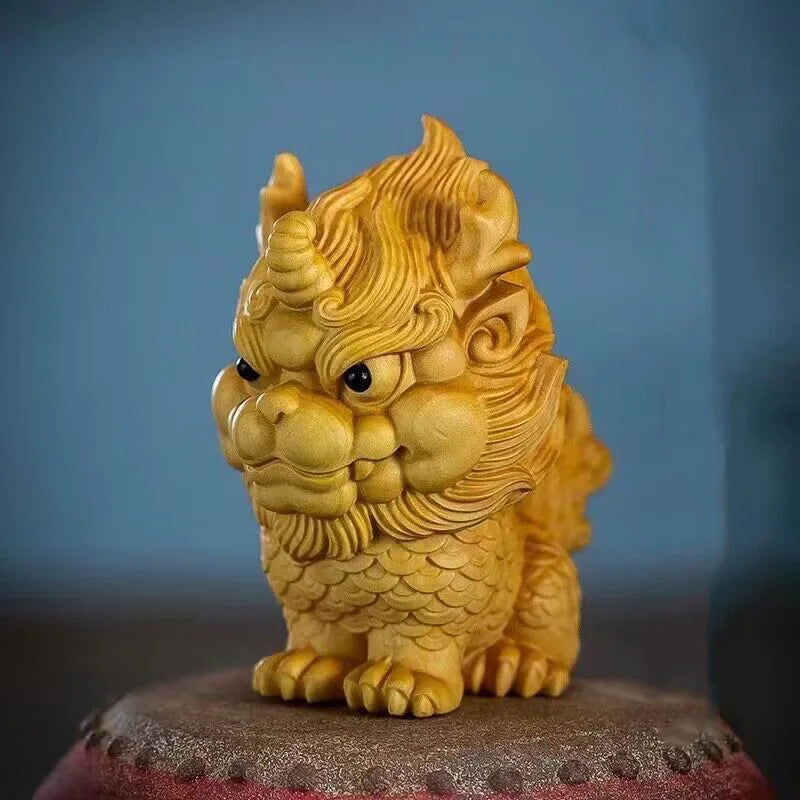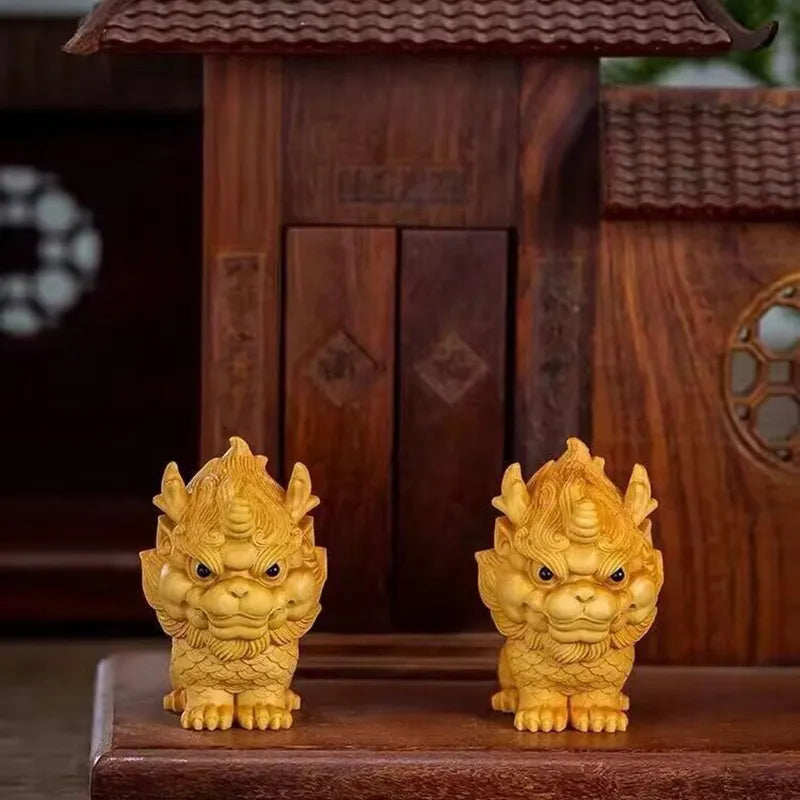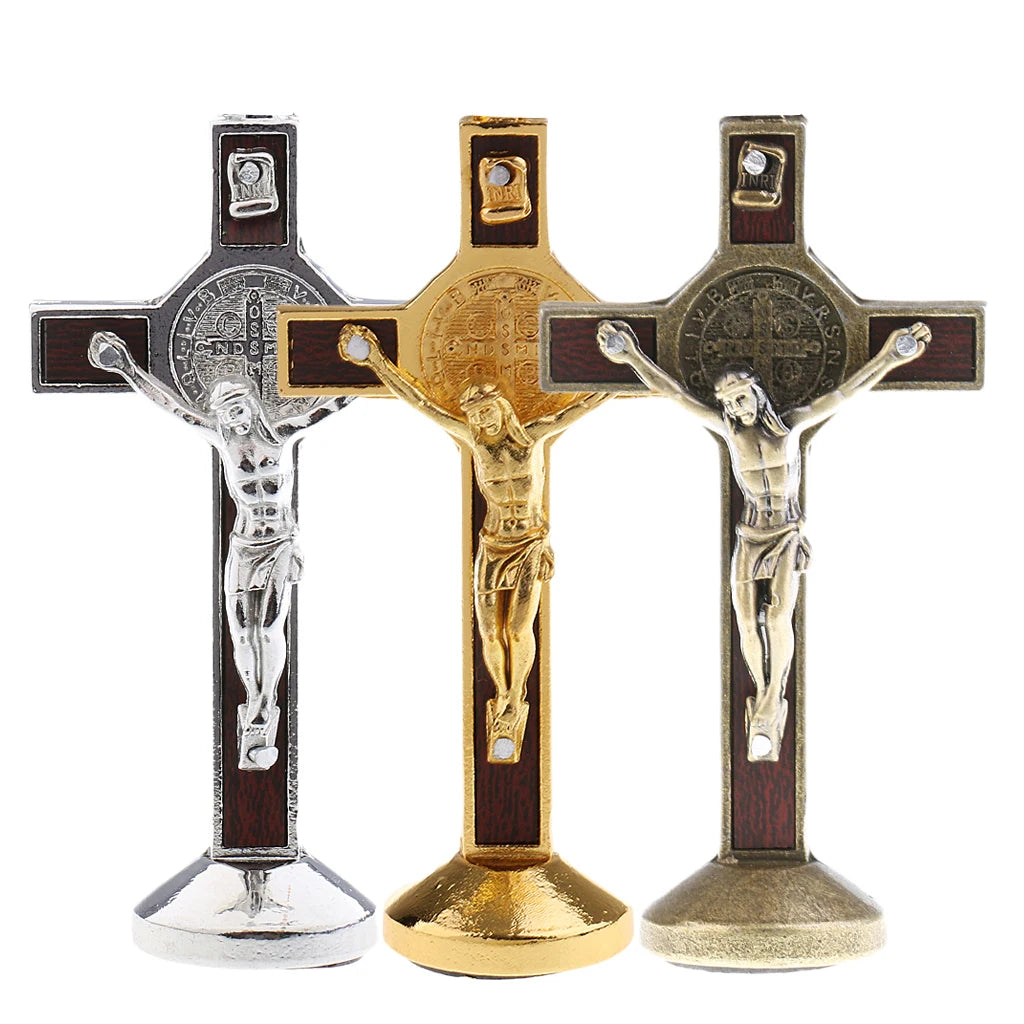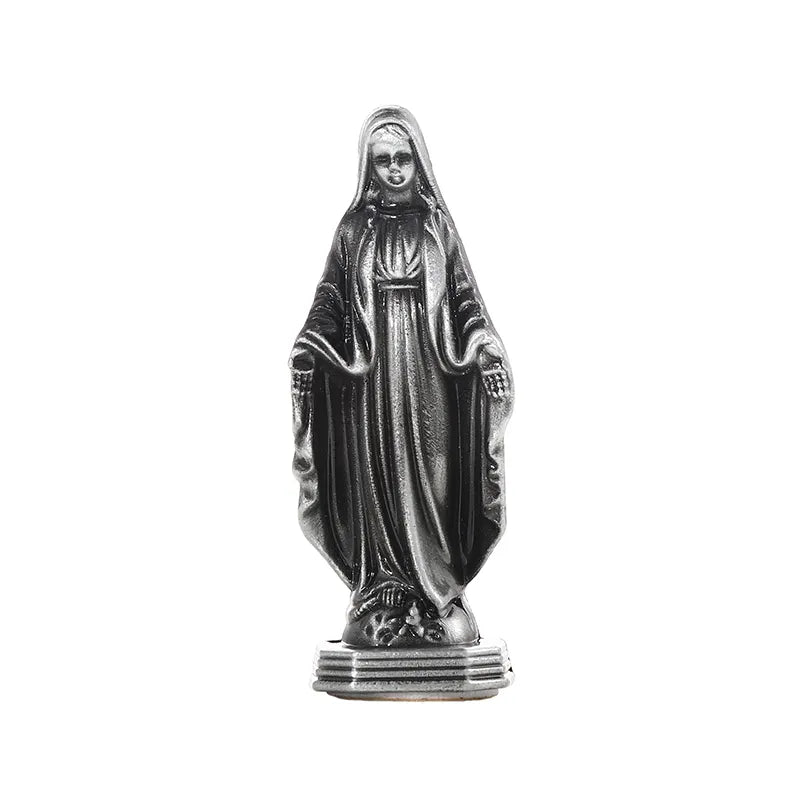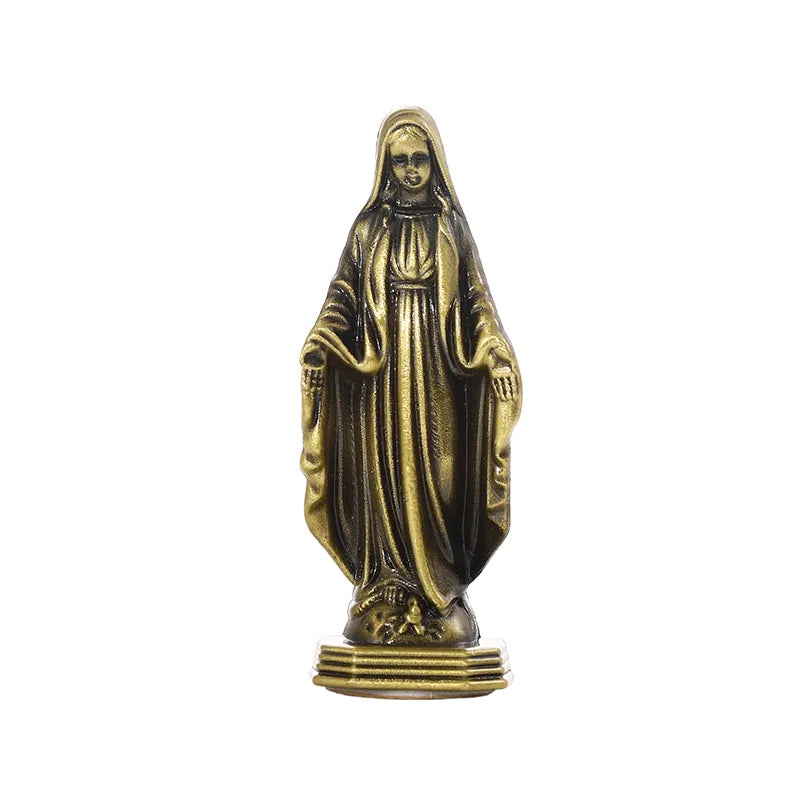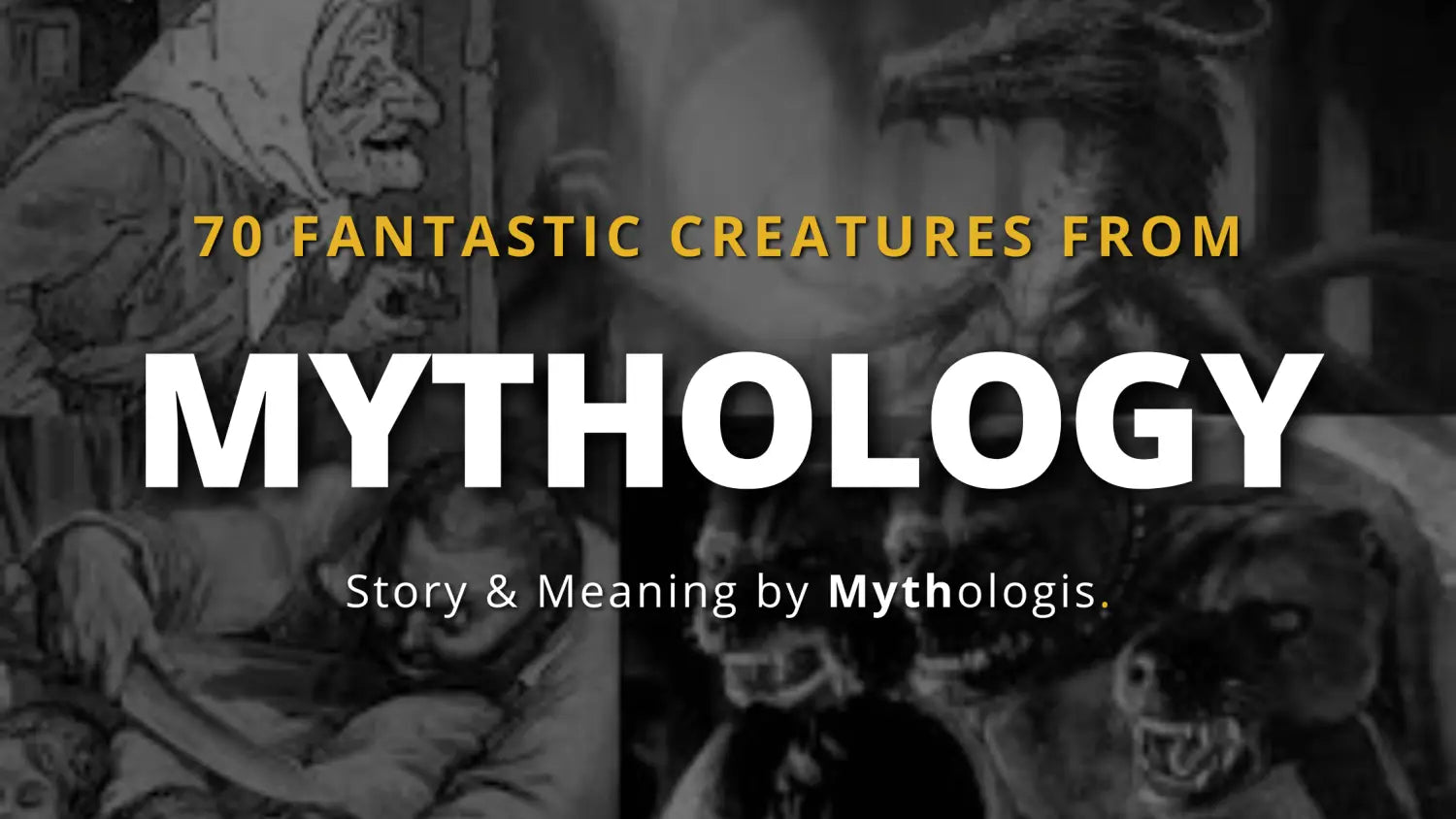Step back in time and discover the rich Ancient Egypt History. From the iconic pyramids and Pharaohs to the complex religion and culture of this ancient civilization, there is so much to learn and explore. With its influential art, architecture, and literature, Ancient Egypt continues to captivate people around the world and serves as a window into the past.
Whether you’re a history buff or simply curious about this fascinating civilization, our blog post offers a wealth of information and insights into the world of Ancient Egypt.
Ancient Egypt History Chapter I: From Prehistory to History
Ancient Egypt Historyl: General Managers
Egypt has a geographical unity: a long strip of arable land, barely more than 40 km wide, stretching more than 1000 km from Aswan and the Nubian border in the south to the Mediterranean Sea, between the Libyan plateau and the Arabian chain.1 million years ago, until the historical period, it was the least unfit for life in East Africa.
Ancient Egypt History: The formation
The beginning of the settlement should date from the end of the Abbasian rainy period, in the Middle Paleolithic, i.e. around 120,000-90,000 B.C.E. The first inhabitantsDuring the Abbasian rainy period the Acheulean culture probably spread to the western areas. The end of the Acheulean marks a clear technical revolution: the passage from biface to glare. This period lasted until around 30,000 BC and corresponded to the Mosterian and Aterian civilizations to the hunting economy.
Ancient Egypt History: Hunters and farmers
A civilization was born in the Middle Paleolithic around 45,000 BC and disappeared in the Late Paleolithic around 20,000, the Khormusien (named Khor Musa, not far from Ouadi Halfa). The desertification of the Saharan areas seems to have pushed men towards the valley. This group combines food from the savannah (wild ox, antelope, gazelle) and the product of fishing. It is at this time that the elements of the future civilization of the pharaohs were melted in the Nile valley. 15,000 to 10,000 years ago, the culture of Dabarosa took over from the Khormusian and the passage to the microlithe was accomplished with the Ballanian. At the same time in Nubia the Gemaian replaced the Halfian to arrive at the Qadian culture where traces of an attempt at agriculture can be found which did not survive the turn of the 10th millennium (the real passage will take place in the middle of the 6th millennium perhaps under the influence of the Near East). The type of burial and the material found in the tombs reflect a lifestyle with many points in common with Neolithic civilizations.
Towards the Neolithic
The essential break between Prehistory and History occurs at the turning point of the 7th and 6th millennium, a little-known period that separates the Epipaleolithic from the Neolithic. Everything seems to contribute to a radical change in civilization. A new subpluvial period favors breeding and agriculture, weaving techniques (linen), pottery and basketry, and the weaponry is perfected: fine arrowheads in polished flint, bone harpoons. The organization of the society is based on agriculture: the habitat is fixed in the form of farms intended for breeding (oxen, goats, pigs) as well as for cultivation (silos storing wheat and barley). The burials are established outside the world of the living, at the limit of the arable land. The exploration of Neolithic sites is far from complete, which does not allow us to demonstrate whether there was a cleavage between the North and the South of the country. The northern sites have a superior stone industry (weapons, vases) while the southern sites are distinguished by the quality of inlaid and red pottery with black rims. But these differences are perhaps due to the chance of the discoveries, but if one postulates for a real separation, one can think that the process of unification would have been done in four stages, from the beginning of the Chalcolithic to the Thinite period.
The “primitive” predynastic
The first stage, the “primitive” predynastic, from the middle of the 6th to the middle of the 5th millennium, saw the last stage in the evolution of the Fayum A in the north and the Badarian (according to the Badari site) in the south. The people of the Fayum lived more from fishing and seemed to have a better technique for making stone vases and flint weapons and tools. During this period, there was an improvement in furniture and agricultural equipment as well as a significant change in funeral practices. The deceased was buried under the shelter of animal skins, and his tomb took on an increasingly architectural appearance. Plastic forms are born: ceramics from the North reach a very complete stage, gold and ivory objects appear (combs, blush spoons, figurines, jewelry, amulets with human or animal figures).
Ancient Egypt History: The ancient predynastic
Around 4500 B.C.E., the second stage of the unification process, the Amratians, took place without profound modifications. It corresponds to the first known phase of the El-Amra site about 120 km south of Badari, in the heart of this region which, from Assiut to Gebelein, contains the richest predynastic deposits. This phase corresponds, 150 km further south, to the first occupation of the Nagada site (known as Nagada I) Ceramics underwent a double evolution: in form and in decoration, with geometric motifs drawn from the painted or incised plant and animal kingdoms. The valley opened up to the outside world because of the need for raw materials: in Nubia, probably by caravans, in the West by way of oases, by the Red Sea, in the Sinai… The exploitation of quarries, located in areas far from cultivated land, forced the Egyptians to organize real expeditions during which they had to control the extraction sites and the transit routes. This constraint will determine one of the major aspects of the foreign policy of the pharaohs in order to guarantee these zones against the incursions of foreign peoples. The stone tableware found in El-Amra suggests that the relations between the cultural groups of the North and the South have intensified.
Ancient Egypt History: The Gerzean
The discovery of the culture of El-Gerzeh allowed to determine a third period, the Gerzean, which corresponds to the second phase of Nagada (or Nagada II). Compared to the previous culture (the Amratian), the Gerzean differs by the production of a ceramic that develops stylized patterns: geometric to reproduce plant themes; naturalistic to represent the fauna (ostrich, ibex, deer). Moreover, the potteries and the palettes of blush come alive with characters and boats carrying divine emblems. The tombs become replicas of earthly dwellings with furniture, amulets, figurines and ceremonial objects decorated with themes representing animals (lions, bulls and cattle, hippopotamuses, falcons…) that symbolize the deities. The fourth stage measures the influence of the North on the South to the point of producing a mixed culture, the recent predynastic (Nagada III), which immediately preceded the unification of the country and which is located around 3,500 to 3,150 B.C. Thus, archaeological data show that the passage from Prehistory to History is the result of a slow evolution and not a sudden upheaval.
Ancient Egypt History: The Writing
The study of Nagadian representations on vases allows us to see the path from the stylization of plants through animals to the divine signs that are already hieroglyphs. It is possible that the earliest inscriptions may have been made by direct representation, and that later phonetic notation may have been considered a technical advance; Egyptian writing combines ideograms, phonograms, and determinatives. Hieroglyphs are reserved for lapidary and more generally mural inscriptions and are engraved, incised, or painted. For administrative, accounting, and legal documents, or for archiving texts in general, a cursive script called “hieratic” was used, from which a new form called “demotic” was derived around the seventh century BC. The hieratic is the utilitarian writing, the first that the young scribe learns at school by forming his letters with the calame on a pottery shard called “ostracon” or on a clay tablet with a stylus. Papyrus, more expensive, is reserved for important texts. Under the Greek and Roman influence, the writing evolved towards Coptic, a phonetic notation which became the writing of the Church and will be maintained until today as a liturgical language.
Ancient Egypt History: Political unification
The debate on the constitution of the pharaonic civilization is far from over. On the one hand, Egyptian sources seem to speak of a triumph of the South over the North. On the other hand, archaeological data allows us to follow the growing influence of the cultures of the North on Middle and Upper Egypt, and direct documentation is essentially made up of pallets. Votive objects, they are of two types. The first is made of simple zoomorphic figures, the outline of the palette representing the body of the animal (turtles, fish, hippopotamus…). The second commemorates events and combines symbolic figurations and historical notations in which man appears.
Ancient Egypt History: The pallets
In all the compositions, they are fearsome animals symbolizing the animal power that man must face and dominate. For example: the “ostrich” palette (Manchester), the “hunting” palette (British Museum and Louvre), two palettes from Hierakonpolis (Louvre Museum) are delimited by two dogs facing each other, between whose bodies lions, deer, bulls… move in an inextricable tangle. The palette “with vultures” (British Museum and Ashmolean Museum) relates a purely human confrontation in a symbolic way: a lion, image of royal power just like the bull, and vultures, tutelary deity of Hierakonpolis, slaughter warriors of the Nubian type. Similarly, the palette “with bulls” shows a bull flaying an individual of the northern ethnic group. The two witnesses of the ultimate phase of the conquest also come from Hierakonpolis. The first is a club head belonging to a king wearing the white crown of the south who is building a canal with a hoe. The king’s name is indicated by a pictogram of a scorpion, and the Narmer’s palette (Cairo Museum) shows the final stage. On the reverse side, the king, whose name is written in two hieroglyphs – the nar fish and the sea chisel – smashes the head of a man explicitly designated as belonging to the northern kingdom. The front affirms Narmer’s triumph: Below, a bull smashes a crenellated enclosure, trampling the defeated enemy; above, the king wears the red crown of the North. These documents, supported in turn by others, such as the palette of “Libyan tribute”, support the hypothesis of the constitution of a state in which we already find all the elements of pharaonic power, from religion to writing, through the economy, housing and structures of government …
Ancient Egypt History Chapter II: Religion and History
Ancient Egypt History: The emblems
From the Predynastic era, the emblems have represented the provinces that make up the country: An oryx on a bulwark represents the region of Beni Hassan, a hare the neighboring province of Achmounein, a dolphin that of Mendes … They may symbolize the local deity (the arrows and shield of the goddess Neïth for Sais, the scepter-ouas for Thebes, the reliquary of the head of Osiris for Abydos) or a political structure (“white wall” representing the enclosure of Memphis).
Ancient Egypt History: Cosmologies
There are three of them, but they represent the political variations of one and the same theme: the creation by the sun from the liquid element, and Heliopolitan cosmology is the oldest. In the beginning was the Noun, an uncontrolled liquid element or “chaos” which, after creation, remains confined to the mud of the organized world that it threatens to invade if the balance of the universe is disturbed. It is the dwelling place of negative forces and of that which escapes the categories of the universe: souls in pain who have not benefited from appropriate funeral rites or stillborn children. From this chaos came the sun “which came into existence of itself”. Its appearance takes place on a mound of earth emerging from the water, symbolized by the benben stone, the object of worship in Heliopolis. This god, who is his own creator, is alternately Ra, the sun proper, Atoum, the completed being par excellence, or Khepri, represented in the form of a beetle. The demiurge, while masturbating, gives birth to a couple, the god Chou, the Dry, and the goddess Tefnut, the Wet. From the union of the Dry and the Wet is born a second couple: Heaven Nut and Earth Geb. They have four children: Isis and Osiris, Set and Nephthys. The second couple is sterile. Osiris, king of Egypt, is assassinated by his brother Set, the negative and violent counterpart of the organizing force symbolized by the pharaoh. He seizes the throne after his death. Isis, model of the wife and the widow, helped by her sister Nephthys, reconstitutes the dismembered body of her husband. Anubis, the jackal born of Nephthys’ illegitimate love affair with Osiris, embalms the deceased king. Then Isis gives birth to a posthumous son, Horus, namesake of the solar god of Edfu, and like him, is embodied by a falcon. She hides him in the marshes of the Delta near the holy city of Bouto with the complicity of the goddess Hathor, the feeder cow. The child grows up, and after a long struggle against his uncle Seth, obtains from the court of the gods presided over by his grandfather Geb to be reinstated in the inheritance of his father who is entrusted with the kingdom of the dead. To this scheme of the reign of the gods are grafted many secondary legends. There is little mention of the very creation of men which seems contemporary to that of the world. One exception is the legend of the “Eye of Ra”. The sun loses its eye. He sends his children Chou and Tefnout in search of the fugitive but time passes without them returning. He therefore decides to replace the absent one. In the meantime, the fugitive eye returns and is replaced. Out of rage, he begins to cry and from his tears (remout) are born the men (remettre).
Ra then transforms him into a cobra and attaches him to his forehead: he is in charge of striking the god’s enemies with lightning strikes. The theme of the damaged or replaced eye has several developments. The theme of the damaged or replaced eye has undergone several developments, including the birth of the moon, Ra’s second eye entrusted to Thoth, the Ibis-headed scribe god. It also evokes the “healthy” eye of Horus. Horus lost an eye during the battle with Set for possession of the kingdom of Egypt, and Thoth is said to have restored it to him and made it the prototype of physical integrity. Ra, king of the gods, must struggle to retain his power, which he tries to take away every night as he races into the afterlife from the fierce enemies led by Apophis, the personification of the negative forces. Other attempts are made against the king of the gods. For example, Isis, the Great Magician, attempts to seize power over Ra by having him bitten by a snake. To be saved, he must reveal his secret names to the goddess. Egypt also possesses the myth of the revolt of men against their creator who decides to destroy them. He sends his eye to earth in the form of the goddess Hathor. She devours a part of humanity in one day and then falls asleep. Re, judging the punishment sufficient, spills beer which, mixed with the waters of the Nile, looks like blood. When she wakes up, the goddess sucks this drink and collapses, drunk. Humanity is saved but Re, disappointed by her, retires to the sky, on the back of the celestial cow which will be supported by the god Cabbage. He hands over the administration of the Earth to Thoth and the snakes, insignia of royalty, to Geb.La cosmologie hermopolitaine: Hermopolis, today Achmounein about 300 km from Cairo, capital of the fifteenth name of Upper Egypt has developed its own cosmology. The starting point is the same as in Heliopolis: a liquid chaos in which four couples of frogs and snakes frolic in the water, joining together to create and deposit an egg on a mound emerging from the water. These couples are each composed of an element and its parhedron: Noun and Naunet, the primordial ocean, Het and Hehet, the water that seeks its way, Kekou and Keket, darkness, Amon, the hidden god, and Amaunet. The third cosmogony is known by a unique and late document (reign of the Kushite sovereign Chabaka at the turn of the 7th and 6th century B.C.). It is a granite slab from the Temple of Ptah in Memphis, which is preserved in the British Museum. It combines elements of the previous two while recognizing the local god Ptah as a demiurge.
The creation is done by combining thought and the verb.From myth to historyThe integration of myth to history is known by the royal lists which reproduce the data of the cosmogonies (more particularly that of Memphis) and evoke the Golden Age during which the gods reigned on Earth. At the beginning is the founder Ptah whose role is close to that of Khnoum the potter who created mankind on his lathe with clay. Ra succeeds him. He is the prototype of the royalty that he will yield to Chou, the air, separator of the Earth and the Sky. Geb and then Osiris will follow. Finally, it is Horus who ascends the throne. The Turin Canon then gives a sequence of three gods: Thoth, Maat, representing balance, and a Horus whose name is lost. Nine gods succeed them and ensure the transition to the power of the human founders. The Turin Canon quotes the first “king of Upper and Lower Egypt”: Meni (Menes in Eratosthenes and Manetho) who may have been Narmer or the Scorpion King. The stone of Palermo speaks about king Aha who would be perhaps the “name of Horus” of Narmer-Menes .
Ancient Egypt History Chapter III: The Thinite Period
The first kingsThe first two dynasties (3150-2700) described as thinites by Manetho, named after their supposed hometown, This, not far from Abydos, begin with Aha. If Aha is one with Narmer, it is he who founded the city of Memphis and introduced the cult of the Sobek crocodile in the Fayum and the cult of the Apis bull. It is assumed that he organized the newly unified country by pursuing a policy of conciliation with the North. If his reign was peaceful, he inaugurated a series of wars that would lead his successors against the Nubians and Libyans and began trade with the Syro-Palestine. The reign of Djer amplified the foreign policy of the country: expeditions in Nubia as far as Ouadi Halfa, perhaps to Libya and the Sinai. He continues the organization of the country economically and religiously, founds the palace of Memphis and is buried in Abydos. Judging by the funerary furnishings found in the tombs of his contemporaries, his reign must have been prosperous.
Ancient Egypt History: Calendar and dating
It is likely that the Egyptians first used a lunar calendar before opting for a calendar based on an easily observable phenomenon, the flooding of the Nile. They divided the year into three four-month seasons corresponding to the agricultural rhythm determined by the flood. The first is the flood (Akhet), the second the germination (Peret) and the third the harvest (Chemou). The beginning of the rising waters is observable in Memphis at the time of the heliacal rising of Sirius (July 19). The phenomenon was already observed during the reign of Djer: an ivory plate dating from his reign, on which is represented a cow lying down carrying between its horns a plant shoot, symbolizes the goddess Sothis, the star of Sirius.
Ancient Egypt History: The end of the dynasty
Djer’s successor, Ouadji (Snake) led an expedition to the Red Sea, probably to exploit the mines of the eastern desert.Den (Uzaphaïs at Manetho), the fourth king, left the memory of a glorious and rich reign. He carried out a vigorous foreign policy turned towards the Near East and an active domestic policy. He was the first to add to his title the name “King of Upper and Lower Egypt (Nyssout-bity). Den’s reign is estimated at nearly half a century, which explains the relatively short reign of his successor, Adjib, followed by Selerkhet and then Qa’at, which ended Dynasty I. The reign of Den is estimated at nearly half a century, which explains the relatively short reign of his successor, Adjib.
Ancient Egypt History: The Second Dynasty
The power seems to have shifted to Memphis. The first three kings of Dynasty II are buried at Saqqara: Hotepsekhemoui (“the Two Mighty Ones are at peace”), Nebre (“Ra is (my) master”), and Nineter (“he who belongs to the gods”). The successors of Nineter, Ouneg, and Senedj are known only through royal lists and inscriptions on vases from the tomb of Djoser. Their power may have been limited to the Memphite region. The last was a contemporary of King Peribsen, whose tomb in Abydos is known to have been laid to him by his local successor Sekhemib (“the man with a powerful heart”). These elements suggest that relations between the two kingdoms deteriorated towards the end of Nineter’s reign, but things changed with Khasekhemoui (“the Two Mighty Ones are Crowned”) who reunified the country and began a vigorous construction policy. Following Manetho, the Thinite period is halted during his reign for no particular reason. The dynasty is already more Memphite than Thinite and the reign of Khasekhemoui sees the end of the clashes between North and South and the final establishment of the economic, religious and political structures of the country.
Ancient Egypt History: The Thinite Monarchy
Most of the institutions are already in place. The principle of the transmission of power by direct filiation on which the pharaonic institution is based already works. Similarly, the king now bears the three names that form the basis of titulature: the name Horus, which expresses the nature of the hypostasis of the god heir to the throne, that of the king of Upper and Lower Egypt (nysut-bity), and, since King Semerkhet, a nebty name that probably reflects the career of the crown prince prior to his coronation. The organization of the royal house is now what it will be in the centuries to come. The palace, built of brick, houses the private apartments, the harem, and the administration at the same time. The king theoretically assumed all power and was assisted by high-ranking officials. A dual institution, the Chancery of Lower Egypt and the Chancery of Upper Egypt, was responsible through scribes for the census, the organization of irrigation, and all matters relating to the land registry. It deals with the collection of taxes and the redistribution of goods which are paid to “treasuries” and “granaries” specialized in cereals, herds and food in general. These organs of the central power deal with local cogs that are divided into provinces that the Greeks called “nomes” and the Egyptians called sepat then qâh (22 nomes for Upper Egypt, 20 for Lower Egypt) under the responsibility of the nomarchs. We know nothing about the military organization of the country but we can assume that the system in force thereafter is already in place. One can have a good idea of the architecture according to the representations of fortresses, the plan of the fortified part of Abydos or the archaic enclosure of Hierakonpolis. For the civil architecture, one is reduced primarily to the playing pieces representing houses and to the representations of the palace facades found in the tombs. Tombs are the main source of information for Thinite art: ivory and bone objects, “Egyptian faience,” ceramics, and stone vases. Small statuary is abundant and varied. The large statuary, however, is still rough and frozen .
Ancient Egypt History : THE CLASSICAL AGE
Ancient Egypt History Chapter IV: The Old Empire
The advent of the Third Dynasty
With the Third Dynasty (2700-2625) begins the Old Kingdom. The list of pharaohs is little known: Nebka (quoted in the Westcar Papyrus) Djoser, Horus Netery-KhetDjoserti or Djoser(i)teti (quoted in the Turin canon) whose name is Horus Sekhemkhet. He leaves an unfinished pyramid at Saqqarah.Nebkarê (?) or Neferka(rê), name of Horus Sanakht (?)Houni, name of Horus Khâba (?)A pharaoh named Horus Zahedjet is waiting to be identified with one of the previous pharaohs.
Djoser and Imhotep
Djoser promoted stone architecture: his pyramid launched a new type of architecture that would be adopted by his successors until the end of the Middle Kingdom, and both the king and his vizier are better known by legend than by historical data. Imhotep, high priest of Heliopolis, priest-reader, chief architect will be divinized in the Late Epoch…
End of the 3rd Dynasty
It is as little known as the beginning of the dynasty. For lack of explicit documents, archaeologists suggest an order of succession based on the architectural evolution of the royal burial ground. Two pyramids have been discovered at Zaouiet al-Aryan, halfway between Giza and Abusir, the southernmost of which is clearly inspired by the pyramid at Djoser and Sekhemkhet at Saqqarah. It is attributed to the Horus Khaba, who is thought to have been related to King Houni, who is believed to be the last king of the dynasty, and the other builder of Zaouiet el-Aryan, whom the graffiti identify as the Horus Nebka(r) or Neferka(r).
Snéfrou
First pharaoh of Dynasty IV, he had a long (perhaps 40 years) and glorious reign and was taken as a model by the kings of the Middle Kingdom. He undertook expeditions to Nubia and Sinai and had at least three Pyramids built: one at the site of Meidum, abandoned for the site of Dahshur, where he had two.
Cheops
The site of Giza, dominated by the Pyramids of Cheops and his successors, remains the necropolis par excellence of Dynasty IV. Apart from a literary tradition of the First Intermediate Period that does not give it a good reputation, Cheops, in Egyptian Khufu, abbreviation of Khnum-ku-foui (Khnum protects me) is little known.
The heirs of Cheops
Cheops had two sons, and he was succeeded by Djedefrê (Didoufri). He is the first to bear in his title the name “son of Re” and leaves Giza to be buried at Abu Roach. Kaouâb, the crown prince, dies before his brother and it is Chéphren, the half-brother of Djedefrê who takes the succession. Chéphren preserves the title of son of Re by developing the assertion of the importance of Atoum vis-a-vis Re. The first example of the royal sphinx dates from his reign. The great sphinx of Giza bears his face, and he is succeeded by his son, Menkauru, or Mykerinos according to Herodotus’ transcription. Mykerinos’ son, Chepseskaf, completed his father’s burial complex but was buried at Saqqarah. He is the last king of Dynasty IV, that of the great builders. Userkaf and the early days of Dynasty VDDuring his short reign, Userkaf built a modest pyramid not far from the complex of Djoser and inaugurated the tradition of building a solar temple in Abousir, a replica of the one in Heliopolis, a city that the new dynasty claimed to be. The new order of things is expressed in the name of Horus, iry-maat, “he who puts Maat into practice. The pharaoh considered himself the one who put creation back in order, and it is also under his reign that Egypt’s relations with the Aegean world would date.
Heliopolitan supremacy
The Vth dynasty seems to have opened Egypt to the outside, towards the North and towards the South. Reliefs in the funerary temple of Userkaf’s successor, Sahuru, show depictions of defeated countries and the return of a sea expedition, probably to Byblos with extensions into the Syrian hinterland. The reign of Sahurea’s immediate successors, Neferirkarê-Kakai, Rênéferef, Chepseskarê, is little known. Niouserrê is known by the funerary temple built at Abu Gurob, which was found almost complete and gives an idea of what his heliopolitan model must have been. Under his successor Menkaouhor, a certain change occurs. Provincial and court officials were no longer necessarily chosen from among members of the royal family and gained in power and autonomy, gradually undermining central authority.
Izézi and Ounas
Izézi distances himself from Heliopolitan dogma. He does not build a solar temple and is buried in South Saqqara, closer to Memphis. During his long reign, he carries out a foreign policy: mines of Sinai and Abu Simbel, Byblos and the country of Punt. The increase in the power of the civil servants continues. The viziers of the time, including the most famous, Ptahhotep, known by his Teaching, left rich tombs.Unas would be the last king of the Vth dynasty. The classical period of the Old Kingdom is generally stopped at its reign, with the decadence of the First Intermediate Period beginning with Dynasty 6.
Birth of Dynasty VI
The Old Empire is at its peak but feudal systems threaten the central power. A new threat is added: the absence of a male heir. Téti ascends the throne and, in order to legitimize his power, marries a daughter of Ounas who will give him Pépi I. He practiced a policy of pacification and alliance with the nobility and continued international relations. According to Manetho, he was assassinated. Userkarê succeeded him, but his reign was brief.
Peep I
Pepi I ascends the throne very young and has a long reign of at least forty years. A conspiracy in the harem suggests that his reign was not an easy one, and he pursued a policy of presence by ordering major works in the main sanctuaries of Upper Egypt: The expansion towards the SouthThe son of Pepi I, Merenre I, continues the policy of his father: exploitation of the mines of Sinai, the quarries of Elephantines and Nubia. He retained control of Upper Egypt and led campaigns in Syro-Palestine and Nubia, and was succeeded by his half-brother Pepi II, who died when he was only ten years old.
Toward the End of the Empire
Tradition has it that Pepi II ruled for 94 years. The royal list of Abydos mentions a Merenre II who would have reigned only one year and would be the husband of Nitocris who, according to Manetho, was the last queen of the VIth dynasty.
Society and power
The Old Empire ends with a confused period during which the disintegration of the central administration accelerates, which is comparable to a pyramid at the top of which is the king who, in fact, only deals with military and religious affairs. At the beginning of the Old Empire, the function of vizier was entrusted to princes of blood. The vizier is in a way the chief of the executive and has competence in almost all the fields. At the same time appears the “Chancellor of the God” who is in charge of the expeditions to the mines or the careers, the commercial voyages abroad and who is allotted an armed troop. Sign of weakening of the central power, the charge of vizier is doubled under Pepi II so as to cap separately Upper and Lower Egypt. 4 departments of the administration depend on the vizier to which is added the provincial administration: The Treasury, i.e. the “Double Granary” manages the whole economy and receives the tax. Agriculture is subdivided into two departments: the first takes care of the herds through two “houses”, the second is in charge of the crops themselves: the “field service” and that of the lands gained by the flood. The department of the royal archives keeps the titles of property and all the civil acts (contracts and wills) as well as the texts of the royal decrees. The Department of Justice enforces the laws. Alongside the government, local administration is based on the division of the country into nomes, whose administrator is primarily responsible for the maintenance of irrigation and the conservation of estates. It is the local administration that underwent the most significant evolution during the Old Empire: the office of nomarchs became hereditary in fact.
Egyptian plastic
From Djoser to Nitocris, art has evolved. Representations, originally reserved for the king and members of the royal family, were later extended to civil servants. There is no Art for Art’s sake. Art is a matter for civil servants and serves only two purposes: one political-religious, exclusively reserved for the king, and the other funerary, progressively conquered by private individuals. The concern is to reproduce reality while providing a “habitable” body for eternity. The body is treated in a more idealized way than the face that should characterize the individual. Similarly, attitudes are stereotyped because they represent a function. The principle of “the combination of points of view” means that each element is unambiguously recognized: the eye is only recognizable from the front, the nose in profile, the shoulders are seen from the front like the hands, while the arms are in profile and the pelvis three quarters… Perspective is not used either.
The statuary
The technique of carving is known from the scenes decorating the walls of the mastabas and from the discovery of a workshop in the Mykerinos funerary complex. The block is cleared in the quarry and roughened on the spot and then transported to the workshop where the contours are refined. The statue is then polished and engraved, the attitudes are determined by the function. The king is represented sitting on a massive cubic throne. He is dressed in a chendjit loincloth and wears on his head the insignia of his power: crown or nemes and a hairpiece beard. From Dynasty 4 onward, the king can be shown worshipping. From Dynasty 6, the king may be depicted as a child, perhaps because of the young age of Pepi II when he ascended the throne.1 At the end of Dynasty 4, the evocation of family ties develops and the style gradually moves away from perfection. The 5th and 6th Dynasties saw an increase in the number of civil works of art, which tended towards greater realism, and since the 4th Dynasty there has been a tradition of woodwork in addition to stone statuary.
Relief and paintings
In the mastabas, the representation is worked directly on the fine limestone wall that has been smoothed and prepared by smoothing. The scenes are drawn with lines. At the beginning, the subjects are reserved and the background is completely folded down. When the tomb is altered and carved into the ground, the wall is leveled with plaster and painted directly on it. The themes bring together all the scenes evoking the earthly life or the funeral of the dead…
Chapter V Funeral Concepts
From tumulus to mastaba
During the first two dynasties, there was a gradual evolution towards the classical mastaba, both a place of worship and a reproduction of the earthly dwelling, limited by brick walls with pilasters and redans giving the impression of a “palace facade” in false perspective. The stele, which has been used since the first Thinite Kings to recall the name of the deceased, is evolving and becoming richer. Reserved at the beginning to the kings, the high officials appropriate it. It includes, in addition to the name of the deceased, the offering that must be served to him, combined with the “false door”: a representation in false perspective allowing the energy of the dead man, his ka, access to the sensitive world from which he had to withdraw the food necessary for his survival…
Elements of Survival
Each individual is composed of five elements: The shadow, the immaterial double, the akh: it is the form in which the power of the gods or the dead, their spirit, is manifested. It allows the deceased to access the stars during his passage to the afterlife. The ka is the life force that each being possesses and which must be nourished to maintain its effectiveness. The ka is the life force that each being possesses and which must be nourished in order to maintain its effectiveness. It is the life force that allows the body to resume a life similar to the one it was leading on earth. The ka also needs a support, which is why we try to provide it with substitutes in case the body deteriorates. The ba (often called soul) is a kind of double of the individual, represented as a man-headed bird that leaves the body at the time of death and returns to it after mummification. The name is a second creation of the individual. To name a person or a thing is to make it exist beyond its physical disappearance. The first pyramidsDjoser made evolve the shape of the royal tomb from the mastaba to the pyramid. Thanks to the research of Jean-Philippe Lauer, one could reconstitute the successive stages of the passage to the pyramidal shape. At the beginning, Djoser undertook a traditional burial. A large 28 m shaft gives access to a vault, galleries serving as stores and a funeral apartment decorated with blue earthenware. The shaft was to be blocked by a granite plug after the funeral, and is topped by a massive square structure about sixty meters square and eight meters high. Additional shafts were dug to receive the royal family members who had died in the meantime. To conceal these shafts, the original mastaba was extended eastward, and a radical change occurred. Imhotep encapsulates the original mastaba in a four-degree pyramid and then takes it up again, raising it further to form a six-degree pyramid about sixty meters high. This type of construction is taken up by the Horus Sekhem-khet at Saqqara itself. The Pyramids of Zaouiet el-Aryan herald a new technique, the best example of which is the Snefru Pyramid at Meidum. The first stage of the Meidum Pyramid probably consisted of a mastaba topped by a small stepped pyramid that brings it closer to the Dynasty III Pyramids. However, the square plan, the opening in the masonry on the north face, the layout of both the infrastructure and the body of the monument link it more closely to the classical Dynasty IV pyramid. The initial core was augmented by six side slices that form a seven-step pyramid. A final slice was added and the eight steps were made of fine limestone. Later, the steps were filled in and a limestone facing was put in place that gave the whole the appearance of a “true” pyramid with a slope of 51°52′ for a side of 144.32 m and a height of 92 m. Snefru made a new attempt at Dahshur, with the “southern” pyramid. The interior installations had to be taken over and modified as well as the slope which was changed from 54°31′ to 43°21′. This break earned it the name of “rhomboidal pyramid”. The king made a third attempt, again at Dahshur, but to the north of the site: a new pyramid with a larger base and a slope of 43°36°, whose funerary temple remained unfinished.
The group of Gîza
The most perfect is that of Cheops: 230 m on each side, each side facing a cardinal point, 146.59 m high it was surmounted by a pyramidion. Plundered since antiquity, only a granite sarcophagus remains inside. Construction: The choice of site was based on the capital, on the west bank of the river. It was necessary to have a bedrock capable of supporting the mass of the constructions. The site was then leveled. The orientation was done according to the sides facing the cardinal points. Part of the stones could be extracted from local quarries. The rest was transported on barges during high water, a period when labor, especially from peasants, was available (Cf. Text: description by Ouni for Menenrê. p.156)As for the lifting techniques, J.-Ph. Lauer’s explanation seems the most likely: use of one or more ramps whose slope was varied. The Pyramids of Dynasties 5 and 6, with the exception of Chepseska, who had a huge mastaba built at South Saqqarah, follow the Cheops model without ever matching its perfection or size.
The funerary complex
Djoser’s Complex at Saqqarah (plan p. 161): The entrance, at the southeast corner, is the only real door among the fourteen doors around the enclosure, followed by a corridor lined with two rows of twenty columns and a hypostyle hall. From here, one enters a large north-south courtyard that separates the pyramid (to the north) from the cenotaph (to the south), and from here one enters a complex dedicated to the celebration of the festival-sed: a T-shaped temple, a courtyard lined with chapels, and a platform. The northern part includes the facilities for the funeral cult itself: a serdab with a statue of Djoser and the funerary temple. The organization of the burial complex changed from Dynasty 4 onward (plan p. 2), and the layout of the burial complex changed from Dynasty 4 onward (plan p. 3). The organization of the burial complex changed after Dynasty IV (plan p. 162), when it consisted of three main parts: the pyramid and its direct outbuildings; the reception temple or valley temple on the edge of cultivated land that received the deceased king; and the rising causeway that led to the temple of worship where statues of the deceased received offerings. Next to the Pyramids, pits are provided for wooden boats.
The solar temple
It is not a sepulchre but its structure is close to that of the funeral complex. All of these temples are typical of Dynasty 5, and are located between Abu Abusir and Abu Gurob. That of Niouserrê, which one knows best how to reconstitute, is undoubtedly built on the model of the temple of Heliopolis, which consists of the temple of the valley where the worship is celebrated, in the open air, followed by an access ramp leading to the representation of benben, truncated obelisk posed on a broad podium, incarnation of the creative sun.
The Texts of the Pyramids
Unas laid out the plan for the tomb’s interior installations according to a scheme that remained in effect until the end of the Old Kingdom (see diagram p.167). The entrance is to the north. A vestibule with three granite harrows closes the entrance. An antechamber leads east to the serdab where statues of the deceased are stored, and west to the sarcophagus room. The Pyramid of Ounas is also the first to have funerary texts on its interior walls. They are found in the royal tombs of Saqqarah: Bunas, Teti, Pepi I, Merenre, Pepi II, and Aba. They influenced the texts of the Middle Kingdom sarcophagi, which were no longer reserved for kings, and which in turn influenced the Books of the Dead of the New Kingdom and the Late Period. These formulas are a ritual designed to ensure that the deceased would pass on to the afterlife.
Civil Tombs
The king’s subjects placed their tombs near his burial site. The tombs of private individuals in the Old Kingdom retained the mastaba type of architecture (see map on page 171). It is not known whether the body was mummified at the time, and it is likely that in most cases natural desiccation was relied upon.
Funeral rites and worship
Embalming. The Egyptians did not describe the embalming process in detail. What is known comes mainly from Greek authors, Herodotus, Diodorus, Plutarch or Porphyry, as well as from the analysis of mummies using modern techniques. After death, the body was taken to a “House of Purification”. After death, the body was taken to a “House of Purification.” One of the paraschists (priest surgeons) would cut into the left flank and eviscerate the corpse. The organs were embalmed, swaddled, and placed, until the beginning of the Third Intermediate Period, in vessels called canopies under the protection of the Sons of Horus: Amset, Hapy, Douamoutef, and Qebehsennouef. Later, in the form of “canopic packets,” they were put back into the body. Once the body was emptied, the taricheute “salted” it by placing it in the natron, where it remained for about 35 days. To fight against the blackening caused by this treatment, certain parts of the body were dyed with henna or coated with ochre, red for men, yellow for women. The abdomen and chest were then stuffed with pieces of fabric soaked in gums, herbs and ointments, and then the swaddling began, which was done in stages. Each limb was wrapped with linen bands. The whole body was then covered with a large piece of cloth and a mask was placed over the face. Most often made of cardboard, it could be made of gold for large figures. This mask developed into a “board” covering the entire body and reproducing the appearance of a sarcophagus lid, the ultimate stage being the “portraits” of the Fayum. The ritual was the same for all. The ritual was the same for everyone, and the difference, depending on social status, varied in the price of amulets and the fabrics used. From the New Kingdom on, a Book of the Dead was often slipped between the mummy’s legs. The mummy was then placed in a sarcophagus. The mummy is then placed in a sarcophagus. Originally, its shape was square with a “palace facade” decoration. From Dynasty 6, the sarcophagus began to include text, including chapters from the Sarcophagus Texts. The material and form also evolve.the funerary furniture consists of a bedside table, dishes, and personal objects.the vault is closed with a portcullis and the well is blocked during the funeral. It is the chapel, which is located in the superstructure, that evolves the most: increase in the number of rooms and addition of niches.the decoration scheme of the chapel is almost always the same. The deceased greets visitors from the doorway with his titles and image on it. On the west wall are the false doorway(s) (the north doorway for the deceased, the south doorway for his wife, with a plant decoration in between). On the opposite wall are funerary scenes: a pilgrimage to Bousiris (on the north side) and to Abydos (on the south side). Scenes from the life of the estates are depicted on the north and south walls. On the north and south walls, scenes from the life of the estates are shown on the north and south walls, and on the south wall behind which the serdab stands, scenes show the incensing of statues.
Decorative themes
The scenes in the tombs inform us about funerary beliefs. Unlike a king who ascends to heaven, the private individual remains in his tomb. It is the proximity of the god, and therefore the king, that ensures the integration of the deceased into the divine world. This explains why the tombs of private individuals gravitate near the king’s tomb. The decorative themes remain centered on the essential realities that concern the dead: scenes from daily life, funeral procession, funeral banquet….
Chapter VI: The Struggle for Power
The Collapse
The delineation called the First Intermediate Period extends over a century and a half from the end of Dynasty VI to the final victory of the Theban Dynasty and the reunification of Egypt, and was not considered as such by contemporaries or in the Manetho Cut-Out. The crisis experienced by Egypt is probably linked to several factors: the decadence of the long reign of Pepi II, the collapse of the 6th dynasty during the succession of Nitocris, climate change, a period of famine and violence …
The heirs
According to Manetho, the VIIth dynasty would include 70 pharaohs having reigned each 70 days. This formulation reflects a period when multiple contenders for the throne were fighting for it, probably after the death of Nitocris (2140 B.C.) Seventeen kings are attributed to Dynasty 8, five of whom take the coronation name of Pepi II: Neferkarê. The Delta is in the hands of invaders from the East, called “Asians” by the Egyptians. The power of the kings is limited to the region of Memphis.
Herakleopolitans and Thebans
With the support of Asyut, the princes of Herakleopolis, capital of the rich 20th nome of Upper Egypt, arrogated power to themselves. Meribrate Chety I founded Dynasty IX (2160-2130), followed by Dynasty X, whose kings posed as successors to the Memphite lineage. Dynasty X, however, unlike Dynasty IX, no longer claimed control of the entire country and recognized the existence of its Theban rival in Upper Egypt, Dynasty XI. Ankhifi’s autobiography mentions this period of opposition between the Theban and Herakleopolitan dynasties. A nomarch of Hierakonpolis, Ankhifi had to fight against the Theban princes during an episode in which the ruler of Herakleopolis, perhaps Neferkarê VII, clashed with the founder of the Theban dynasty, Antef I (successor to Antef the Elder and Mentuthotep I), who became ruler of the South, and Antef II resumed the struggle, this time in Middle Egypt. The opposition between North and South was not a constant war but rather a precarious state of peace during which the country managed to overcome famine and social unrest. The Herakleopolitan ruler Khety III drove the Bedouins and Asians out of Northern Egypt and reorganized the unity of the North. In the South, Thebes was master of all Upper Egypt as far south as Asyut where the last battles were fought. The final reunification there was achieved by Antef III’s son, Mentouhotep II, who opened the Middle Kingdom.
Wisdom and pessimism
Faced with the weakening of power and the image of royalty, faced with the collapse of certain values in society, the resulting anguish and pessimism are expressed in literary works. The teaching of Merikarê that King Khety III would address to his son dates from the Herakleopolitan period and is known by three copies of the 18th dynasty. One can establish a parallel with another Teaching attributed to Amenemhet I (XIIth dynasty): abundance of literary quotations supposing a vast book culture. the father gives to his son directives to succeed in his life and his trade: the transmission of knowledge from generation to generation guarantees order. The Dialogue of the Desperate with his Ba is a desperate observation of a man facing a life where the violence of the wicked reigns. The Tale of the Peasant is known by versions of the end of the twelfth and thirteenth dynasty. It gives us valuable information about the society and morals of the First Intermediate Period, when a peasant in the reign of Nebkaure Khety II is the victim of a greedy steward. He seeks justice from the governor of the estates, who transmits his petition to the king. The latter will let him plead nine times before finally giving him victory when the plaintiff, in desperation, puts himself in the hands of Anubis.
The Individual Facing Death
In the Texts of the Sarcophagi, of which the first examples appear at the end of the Old Empire, a new idea develops: the dead man is found before the court of Osiris. If he has respected the balance embodied by Maat, Osiris will welcome him among the blessed.
Provincial art
Each school develops its own trend while maintaining the memphite canons. New materials, such as wood, are used.
Chapter VII: The Middle Empire
The early days of the unit
Montouhotep II takes the succession of Antef III around 2061. The pacification will last several years and will be completed only towards the year 30 of his reign. He moves the capital to Thebes, reinforces the administration, launches out in companies of constructions and renews with the foreign policy of the Old Empire. He protects the borders from new Asian invasions and undertakes campaigns in Nubia. He dies after fifty-one years of reign and leaves to his successor, his son Montuhotep III a prosperous and unified country. Montuhotep III is old enough when he rises on the throne and will reign only during twelve years. He continued his father’s building program, strengthened border protection in the Eastern Delta, and built fortifications. He led an expedition to the country of Punt and resumed stone mining in the Ouadi Hammamat. Under Montuhotep IV, the last king of Dynasty XI, the situation of the country is confused. We know from a graffiti of Ouadi Hammamat that he sent an expedition of a thousand men.
Amenemhat I
The expedition of Montuhotep IV is led by his vizier Amenemhet, who will become king, not without opposition, and in the year 20 of his reign, he associates his son Sesostris to the throne. This new practice would continue throughout Dynasty 12. The dolphin plays the role of the arm of his father who delegates the army to him. The efforts of the king are focused on Nubia where he leads expeditions.
Literature and politics
Amenemhet I was assassinated in 1962 as a result of a conspiracy hatched by the harem. He was succeeded by Sesostris I. The Tale of Sinuhe: Sinuhe, on his return from the Libyan countryside, learns of the king’s death and, for some unknown reason, takes fright and takes refuge in Syria. The years go by and he finds himself a tribal chief. But nostalgia undermines him and he asks for mercy from Sesostris who accepts his return. This moral story of a civil servant who repented and was forgiven because he remained loyal is one of the most popular works in Egyptian literature, based on the model of The Teaching for Merikarê. The theme of human ingratitude is a reminder of man’s revolt against the Creator. The theme of human ingratitude is a reminder of the revolt of men against the Creator. The king, assimilated to Re, transmits his power to his successor as the demiurge did formerly when he withdrew into the sky, disgusted forever with his creatures. The seizure of power of Sesostris I did not cause any trouble and his long reign of forty-five years was peaceful. He built much. Claiming himself to be part of the Heliopolitan tradition, he adopted the coronation name Neferkarê and rebuilt the Temple of Ra-Atum in Heliopolis. H. Chevrier was also active in the Temple of Amen-Ra at Karnak. From 1927 to 1937, he was able to reconstruct a festivity kiosk from blocks reused by Amenhotep III in the Third Pylon, a festivity-sed kiosk from the time of Sesostris I.
The outside world
Sesostris I completes the conquest of Lower Nubia and installs a garrison at Bouhen, on the Second Cataract. He controlled the country of Kush from the Second to the Third Cataract. In the eastern desert, he exploited the gold mines east of Coptos and the quarries of Ouadi Hammamat. In the west, he controlled the oases of the Libyan desert. His son, Amenemhat II reigned for almost thirty years. His son Amenemhet II reigned for almost thirty years, and peace continued under his reign and that of his successor, Sesostris II. Egypt began to play an important role in the Middle East and opened up to Eastern influences that were beginning to be felt in civilization and art.
The apogee of the Middle Kingdom
After a co-regency of almost five years, Sesostris II succeeds his father for about fifteen years. He undertook the development of the Fayoum, an oasis located about eighty kilometers southwest of Memphis, and canalized the Bahr Youssouf, which emptied into the future Lake Qaroun, by building a dike at Illahoun and adding a system of drainage and canals. The project was not completed until Amenemhet III. These major works caused the royal necropolis to be moved again to Dahshur, and when Sesostris III ascended the throne, he chose to end the growing power of the local dynasts. He abolished the office of nomarch and placed the new organization of the country under the direction of the vizier in three ministries (ouâret): one for the North, another for the South and a third for the “Head of the South”, i.e. Elephantine and Lower Nubia. Each ministry is headed by a civil servant assisted by an assistant and a council (djadjat). The consequences of this reform were twofold: the loss of influence of the nobility and the rise of the middle class. Sesostris III organized several expeditions to Nubia and set the limit of his authority in Semna. There is only one known campaign in Syro-Palestine against Mentjiou, which leads the Egyptians to confront the populations of Shechem and Litani; like his predecessor, Amenemhat III is respected from Kerma to Byblos. During his forty-five year reign, he led Egypt to the height of prosperity. The exploitation of the Sinai mines and quarries was intense and resulted in numerous constructions: in Nubia, in the Fayoum… He had two Pyramids built, one in Dahshur, the other in Hawara. Amenemhet IV succeeded his father around 1798 after a short co-regency. The Fayoum remains his primary concern.
The end of the dynasty
Amenemhat IV reigns a little less than ten years. At his death, the situation of the country tends to deteriorate. Perhaps this was due, as it was at the end of the Old Kingdom, to the length of the reigns of Sesostris III and Amenemhet III, each of which had a reign of about half a century, leading to difficulties of succession. As at the end of Dynasty IV, power fell to a queen, Nefrousobek, who for the first time was designated a female pharaoh. The royal lists attribute to her a short reign of three years.13th dynasty, with which one makes begin the “Second Intermediate Period” seems to be the legitimate continuation of XIIth. Nothing gives the impression of a brutal cut: the country does not collapse at all during the century and a half which precedes the seizure of power by Hyksôs.
Classicism
The Middle Kingdom is the time when language and literature reached their most perfect form. All the genres are represented: The Teaching: Maxims of Ptahhotep, Instructions for Merikarê, Maxims of Jedefhor, Instructions for Kagemni. It is in the Middle Kingdom that one of the most widespread Teachings was composed: the Kemit, that is to say the “sum” completed of a teaching whose perfection reflects that of Egypt (Kemet, “the black (earth)”), itself a perfect image of the universe. The Satire of the Trades was composed at the beginning of the XIIth dynasty by the scribe Khety, son of Douaouf. It is known through more than a hundred manuscripts, in the political genre: The Teaching of Amenemhet I and The Prophecy of Neferti; The Loyalist Teaching, the Instructions of a Man to his Son, the Instructions to the Wazir. This is the great period of the novel: The Tale of the Peasant, the Tale of Sinueh, the Tale of the Shipwrecked. The great mythological tales also date from this period but are known by later versions:
– the legend of the Destruction of Humanity.
– the tale of Isis and Ra
– the tale of Horus and Seth
The same is true of the great sacred dramas: the Coronation Drama, the Memphite Drama, the Pessimistic Current is represented by the Dialogue of the Desperate with his Ba and the Collections of Words of Khakheperrezeneb. One must also mention the royal hymnology, diplomacy, autobiographical and historical accounts, correspondence, administrative texts which are abundantly represented as well as specialized literature: treatises on medicine, mathematics, gynecological, veterinary, and medical-magical fragments. Let us also note the first representative of onomastica discovered at the Ramesseum: these lists of words that review the categories of society or the universe (names of trades, birds, animals, plants, geographical lists, etc.) were intended for the training of schoolchildren. The literary works of the Middle Kingdom bear witness to a refinement that combines the tradition of the Old Kingdom with a sobriety closer to the human being. The “White Chapel” that Sesostris I built at Karnak is remarkably pure in form, as is the temple of Qasr es-Sagha or Medinet Madi. However, little is known about the constructions of Middle Kingdom kings. However, little is known about the buildings of Middle Kingdom kings, but their quality can be judged from funerary buildings, especially that of Montuhotep II at Dayr al-Bahari. Queen Hatshepsut used this model for the temple she built next to it, and the originality of Mtuhotep’s architectural research is linked to Thebes. By moving the capital, his successors revived the memphite organization of the burial complex. They chose sites south of Saqqarah: Licht, between Dahshur and Meydoum, where Amenemhet I and Sesostris I settled. The Dahshur site was also used by Dynasty 13 rulers, but the two kings who worked to develop the Fayyum, Sesostris II and Amenemhet III, were keen to move closer to it and were buried there, the first at Illahun and the second at Hawara. The Old Kingdom’s hold on royal statuary is strong, even though the king is no longer the intangible god and has become more human. The only real innovation is the statue-cube: a seated figure whose legs bent towards the chin form a block from which soon only the head will emerge. The only real innovation is the statue-cube, a seated figure whose legs are bent towards the chin to form a block from which only the head will soon emerge. The Middle Kingdom is considered to be the classical period of Egyptian civilization, although architecturally it is the least well known. This judgment is based on the quality of the works that have come down to us.
Chapter VIII: The Invasion
The “Second Intermediate Period”.
The continuous influx of Asian labor, particularly under Amenemhat III, allowed the settlement of populations in the north of the country. This little-known period, which is not a historical period in itself, begins at the end of Dynasty XII, with the death of Nefrousobek around 1785, and ends with the seizure of power by Ahmosis around 1560, opening the New Kingdom. The XIIIth dynasty governs alone at first then enters in competition with the princes of Xoïs and those of Avaris, in the Delta, which form the two hyksôs dynasties, the XVth and XVIth, competitors of the XVIIth Theban dynasty, until Ahmosis expels them. The lists give more than fifty kings for Dynasty XIII.
Continuity
The XIIIth dynasty maintains the continuity with the XIIth. The kings are buried according to the tradition of the Middle Kingdom and leave Pyramids in Dahshur, Saqqarah and Licht. Egypt’s positions are maintained outside, in Nubia as well as in the Near East.
Neferhotep I and Sobekhotep IV
Neferhotep I remained in power for 11 years. He must have authority, the South apart, over the entire Delta with the exception of the 6th nome of Lower Egypt whose chief town, Xoïs (Qedem, near Kafr el-Sheikh) would have been the capital of the XIVth dynasty, parallel to the XIIIth dynasty and to the hyksôs dynasty which will soon arise in Avaris. It is under the reign of Neferhotep I’s brother, Sobekhotep IV, who ruled the country for 8 years, that the city of Avaris (Hout-Ouret, “the great castle”) passed into the hands of the Hyksos.
The Hyksôs
The name “hyksôs” is the Greek deformation of the one given to them by the Egyptians: heqaoukhasout, “the chiefs of foreign countries”. If the last stage of their seizure of power over the North is violent, the progression of the Hyksos of Avaris to the north of Heliopolis is done gradually and takes almost half a century. Their establishment seems to have been well accepted by the population; they found their mode of government in the Egyptian political mould while preserving their own culture. They adopted the hieroglyphic script, were great builders, maintained an Egyptian-style religion around Set of Avaris, whose Semitic characters they emphasized, and continued to bear the name Ra in their titles. Their presence would leave deep imprints on Egyptian civilization. Salitis ruled for twenty years, probably from Memphis, a kingdom that included the Delta and the Valley as far as Gebelein, and the caravan trails that linked it to its Nubian allies. This state of affairs will last until the reign of Apophis I. He delegates part of his authority to a vassal hyksôs branch, improperly called XVIth dynasty by Manetho.
The Thebans
At the same time, a new dynasty was born in Thebes, the 17th dynasty, from a local branch of the 13th dynasty. It is founded by Rahotep. For about 75 years, these kings reigned over the first eight nomes of Upper Egypt, from Elephantine to Abydos. Their economic resources are meager but they maintain the civilization of the Middle Empire. Rahotep’s contemporary hyksôs is Yaqoub-Har (or Iaqoub-Baal), successor of Salitis. He reigns about eighteen years and remains on good terms with the three kings of Thebes who succeed Rahotep: Antef V “the Elder”, Antef VI then Sobekemsaf II, the best known of the kings of the XVIIth dynasty. Around 1635/1633, during the reign of Sobekemsaf II, the XIIIth dynasty ends and the XIVth will survive him only two or three generations in Xoïs. On the side of Hyksôs, Khyan succeeds Yaqoub-Har. In Nubia, a king named Nédjeh takes the power, installs his capital in Bouhen and reigns of Elephantine at the Second Cataract. This kingdom, allied to the Hyksos, will last until Kamosé seizes Bouhen. The theban contemporaries of Khyan are obscure: Djéhouty, Montouhotep VII, Nebiryaou I. Two figures stand out, Antef VII at Thebes and Apophis I on the Hyksos side. At the end of the reign of Apophis I and during the reign of Apophis II, an open struggle begins with Thebes, where Ta’â I, known as the Elder, succeeded Antef VII. He gave way to Seqenenre Ta’â II, known as “the Brave. Upon his death, his son Kamose ascended the throne and secured the caravan trails, cutting off communications between the North and Nubia.
The Reconquest
Ahmosis takes again the fight against Hyksôs and the fight is spread out over several years in the Delta, leading successively to the capture of Memphis then Avaris. The Hyksos domination will be really destroyed only when the Egyptian troops seize the stronghold of Charouhen, rear base of the “Asians” in the Palestinian southwest. The chronology of the last two Hyksos kings is a little confused: Aazehrê is the last of the 15th dynasty. Apophis III closes the vassal branch of Dynasty 16, and after having driven out the Hyksos, Ahmose begins to reconquer Nubia. During his 25-year reign, he completed the liberation of Egypt and brought its international relations back to the level they were at the end of the Middle Kingdom. When he died, his son Amenhotep I succeeded him.
PART 3: THE EMPIRE
Chapter IX The Thutmosides
Ahmosis
The reconquest of the country is followed by its reorganization. It would seem that the administrative structures continued to function within the frameworks established in the Middle Kingdom and that the organization of the Hyksos, in view of the prosperity of the country in their time, must have been efficient. The opening to the Near East continued and conditioned the resumption of the importation of raw materials: silver and gold from Asia and Nubia, lapis lazuli from Central Asia, turquoise from Sinai… Religious and funerary constructions resumed. Amon Theban is privileged to the detriment of the cults of Middle and Lower Egypt.
The beginnings of the dynasty
At the death of Ahmosis, his wife Ahmes-Nefertary assumed the regency for her son, Amenhotep I, who was too young to reign, so Amenhotep I ascended the throne probably around 1526. His twenty-one years of reign were peaceful, both internally and externally, even as the Mitanni began to challenge Egyptian rule near the Euphrates. The country’s economic and artistic development continued, but few of the achievements of the period have survived. The location of Amenhetep I’s tomb is unknown. Is it at Dra Abu’l-Naga? He would have been the last to choose that site since his successor Thutmes I inaugurated the necropolis in the Valley of the Kings. The only thing that is certain is that he made a radical change to the structure of the burial complex by separating the burial chamber from the funerary temple. He will be followed in this by all his successors, each of whom will build their “Home of Millions of Years” on the west bank of Thebes.
Hatshepsut
Amenhotep I lost his son Amenemhet, and was succeeded by Thutmes I, a descendant of a collateral branch. Thutmes I confirmed his legitimacy by marrying Ahmes, Amenhotep I’s sister. Hatshepsut marries his half-brother, born to a concubine, who ascends the throne as Thutmes II. Thutmes II and Hatshepsut had no male heirs but a daughter, Neferurez. Thutmes I led military expeditions and established a boundary stele on the Euphrates River. Thutmes I led military expeditions and established a border stele on the banks of the Euphrates River. In Nubia, he established his dominion until the Third Cataract. Thutmes II maintained this domination through two campaigns: one in Nubia, the other in Palestine. At the death of Thutmes II, Thutmes III was too young to reign. To justify this usurpation, Hatshepsut brackets her husband Thutmes II and invents a co-regency with her father, Thutmes I. The regency of Hatshepsut’s father, Thutmes I, is the only official co-regent. This “text of Hatshepsut’s youth” is found in the funerary temple she had built at Dayr al-Bahari. Among the great figures of the queen’s reign was Senmut, who in Dayr al-Bahari used the general idea of the temple of Mutehotep II to build the temple of Hatshepsut built by the High Priest of Amen Hapousebeb. Hatshepsut reigned until 1458, in the year 22 of Thutmes III, when he regained his throne.
The glory of Thutmosis III
At the death of Hatshepsut, Thutmes III had to face a revolt of the Asian principalities, coalesced around the prince of Qadech under the influence of Mitanni, and it would take no less than seventeen campaigns to bring the situation under control. The battle between Egyptians and Mitannians can be traced in the Annals of Thutmes III, which Thutmes III had engraved in the Temple of Amen-Ra at Karnak. In the year 22-23, he left the Eastern Delta, traveled up through Gaza, reached the plain of Megiddo, laid siege to the city, which eventually fell, and moved up toward Tyre. In the next three campaigns, he led inspection tours and broke the western branch of the coalition, and from 29-32 A.D., Thutmes III attacked the Jahy and Qadezh. In the sixth campaign, the following year, the Egyptians arrived in Syria by sea, ascended to Qadezh, turned back toward the coast, marched on Simyra north of the mouth of the Nahr al-Kebir River, and attacked Ardata. The following year, he led a seventh campaign, again against Oullaza, whose fall led to the submission of the Phoenician ports. 33rd year saw the beginning of a new phase in the Asian Wars: the direct confrontation with the Mitanni. In 33 A.D. a new phase of the Asian wars began: the direct confrontation with the Mitanni, in which the natural barrier of the Euphrates had to be crossed. The army dragged riverboats through Syria. The Egyptians reached Qatna in the east of Orontes and then crossed the Euphrates where Thutmes III consecrated a memorial stele next to the one erected by his grandfather. The next nine campaigns were devoted to trying to reduce the Mitannian forces in Naharina. The end of the reign is calmer: Egyptian supremacy is temporarily recognized in the Near East and relations with the Aegean Sea are cordial.
Amenhotep II and Thutmosis IV
Thutmes III leaves the image of a great king: the memory of crossing the Euphrates River remains imperishable. The Syrian campaigns will serve as the backdrop for a tale of General Jehuty’s capture of Joppa. Two years before his death, he associates the son he had from his second wife, Hatshepsut II Mérirê, Aakheperurean Amenhotep II, less intellectual than his father and more focused on military and sports activities. The latter led three campaigns in Syria, directly directed against the Mitanni, which resulted in the loss of the area between the Orontes and the Euphrates. These will be the last clashes with the Mitanni. Under Thutmes IV, relations changed completely. The new Hittite empire founded by Tudhaliya II threatened Mitanni, who then attempted a rapprochement with Egypt. Peace reigned in Nubia where Amenhotep II decorated part of Kalabsha and continued the work undertaken by Thutmes III at Amada. At the death of Amenhotep II, Thutmes IV succeeded him. The stele he had carved between the legs of the Sphinx of Giza tells how the great god promised him royalty in a dream if he would remove the sand. Amenhotep III’s reign lasted only nine years, and the king died prematurely at the age of about thirty. Amenhotep III and the Highest Point of the DynastyIf Theban painting reached its peak under Thutmes IV, the reign of Amenhotep III, by opening up the country even more to oriental influences, reached a level of refinement that would remain unsurpassed thereafter. Amenhotep III was the son of a concubine of Thutmes IV, Mutemwia. He ascended the throne at the age of twelve, and his mother became regent. He married a woman of non-royal origin, Queen Tiy, daughter of Youya and Tuya. The queen’s brother, the divine Ay will succeed Tutankhamun. Tiy’s influence in the conduct of affairs was important. The reign of Amenhotep III is marked by peace. His name is attested in Crete, Mycenae, Etolia, Anatolia, Yemen, Babylon, and other places. The Egyptian-Mitannian rapprochement is consummated by the marriage of Amenhotep III to Gilu-Heba and then to Tadu-Heba(t), daughters of kings of Mitanni. He also married two princesses of Babylon. The rising power of the time was the Hittites, who took a decisive ascendancy at the turning point of the reigns of Amenhotep III and Amenhotep IV. Egypt was at the height of its radiance and power. Amenhotep III is one of the greatest builders the country has known. He covered Nubia with monuments, in the north he built at Athribis and Bubastis. He begins the great works of the Serapeum at Saqqarah. In the Valley, he built in Elkab, Souménou, Abydos and Hermopolis. At Thebes, he had a temple built at Luxor, believed to be the “southern harem” of Amen-Ra, and had six hundred statues of the goddess Sekhmet consecrated in the Temple of Mut, south of the Karnak precinct. On the West Bank, he had a palace built at Malgata and a gigantic funerary temple of which only two monumental statues (called the Colossi of Memnon) remain. He died in 39 A.D., perhaps having in recent times associated his son with the throne.
Chapter X: Akhenaten
The succession of Amenhotep III-Amenhotep IV, whose co-regency with Amenhotep III is discussed, reigns alone from 1378-52 and is crowned at Karnak, a sign that he was not initially in open conflict with the clergy of Amen-Ra. He married his cousin Nefertiti, daughter of Ay and Tiy II, and thus the granddaughter of Youya and Touya. Amenhotep IV and Nefertiti were an even more politically connected couple than Amenhotep III and Tiy. Like them, they are associated in ceremonies, but what is new is that official art depicts them from the beginning in family scenes previously considered too intimate to be shown. In year 2 of his reign, Amenhotep IV gave Aten the place that Amen-Ra had occupied. In the fifth year of his reign, he founded the new capital, which he called Akhetaton, “the Horizon of the Disc,” and marked the site of fourteen boundary stelae.
The religious reform
Since the beginning of the 18th Dynasty, the rise of Heliopolitan cults has tended to concentrate around Ra the creation and maintenance of life, without however excluding the other gods. It would be exaggerated to speak of monotheism but rather of a fusion of multiple skills in the Creator par excellence, the sun. Amenhotep IV chooses to worship its sensitive aspect, the Disc. Akhenaten’s originality is to have provided an image that is easy to grasp, avoiding the detour by the specialized clergy, the only one capable of serving as an intermediary between men and an impenetrable god. Aten allows the immediate perception of the divine, as opposed to Amun, the “hidden” god, the Disc is a form of the Creator of which the king is the earthly equivalent. It also takes care of the dead, although Osiris remains in the spotlight, and the impact of this reform on the population is almost nil. The impact of this reform on the population is almost nil, firstly because the Court is very quickly confined to Akhetaton. The originality of Akhnaton’s image is less important than one might think. The originality of Akhenaten’s image is less important than one might think. He retains all the pomp and ceremony of his predecessors. Thus, he is depicted slaughtering defeated enemies. He does not touch the structures of the administration. On the political level, his “revolution” reinforced theocratic absolutism: the king was the obligatory intermediary between men and the Disc. The reform had effects in two areas in particular: the economy and art. Akhenaten closed certain temples or limited their activities and attached clerical goods to the Crown. The construction of the new capital and the new temples was to the detriment of the economy in general and of the divine economy in particular.the consequences of atonism on arts and letters were more spectacular and more lasting. The consequences of Atonism on the arts and letters are more spectacular and more lasting. The greater freedom is manifested in contemporary works, especially in poetic compositions: divine and royal hymns and litanies. From the reign of Amenemhat III, official idealism gave way to a more sensual realism that did not hesitate to emphasize the forms of the body through techniques such as “wet draping”. This more generous treatment of volumes also appears in the drawing where the use of line is less rigorous, the use of colors more flexible. Fashion also evolves: new costumes, new hairstyles … Stylistic details are characteristic of the period: the inclination of the eye in the orbit and the stretching of lines that will produce the famous “almond-shaped” eyes of Akhenaten, folds in the neck, pierced ears, etc.. Over the years, the line becomes softer and, at the end of the reign, studies of nature prevail, such as the famous head of Nefertiti of Berlin. New themes appear: the image of the family, omnipresent in all scenes, including and especially those of the cult.
The Royal Family
The construction and the first occupation of the city took place between the years 5 and 6 of Akhenaten’s reign, and in the year 12, Queen Tiy moved to the court of Armana. This installation has been interpreted as the proof that Akhenaten reigned alone only from that date. That same year, one of the six daughters of the royal couple, Meketaton, died. Nefertiti seems to play a less important role after the year 12, and she even separated from her husband, if one of her daughters, Meritaten, replaces her in the ceremonies with the king. The three years of the end of the reign are troubled: the country is given over to anti-amonian persecutions which result in the hammering of the names of the god, hammering which will in their turn undergo Akhenaten and his god a few years later. Perhaps there was a co-regency with Neferneferuaton Smenkhkarê, who has moreover been attested as king, his reign being situated between those of Akhenaten and Tutankhaton for a possible duration of two years. The body of Smenkhkarê was found in a tomb dedicated to him in the Valley of the Kings. Everything indicates that it is a hasty re-burial. In that tomb, other remains have been found that may have belonged to Queen Tiy, and it is generally believed that the entire royal family was thus transferred to the reign of Tutankhamen.
The Horizon of Aten
It is probable that Smenkhkarê and then Tutankhaton were cousins or nephews of Akhenaten who legitimized their rise to the throne by marrying one of the king’s daughters. When he succeeded Smenkhkarê, Tutankhaton was about nine years old. He married Princess Ankhesenpaaton. Very quickly, he leaves Amarna for Memphis. The city of Akhetaton is abandoned after only about thirty years of existence.
The revenge of Amon
The return to Amonian orthodoxy took place under Tutankhaton, probably under the influence of the divine father Ay. The young king begins by changing his name to Tutankhamun. He dies at about nineteen years of age without having had a child from his wife Ankhesenamon: with him dies the line of Ahmosis. His widow begs the Hittite king Suppiluliuma to send one of his sons to marry him and make him Pharaoh of Egypt. The prince will never arrive and the union between the Hittite and Egyptian empires will not take place. Ankhesenamon perhaps marries the vizier of her late husband, Ay who, himself, will reign only during four years. The real dynastic break takes place when the commander-in-chief of the army, Horemheb, takes the power and presents himself as restorer of the established order. He was a great builder, especially in Karnak. After twenty-seven years of reign, he will be buried at Thebes in the Valley of the Kings. Having no male heir, Horemheb passed power to another military man, a general from the Delta who would found a new dynasty, the Rameses.
Chapter XI: The Ramessides
The origin of the dynasty
Rameses I was not of royal blood, but came from a line of soldiers. His name Horus, “He who confirms Maat through the Two Lands,” shows his willingness to continue the work of Horemheb. His first name, Ramessou, “Re gave birth to him” and his crowning name, Menpehtyre, “stable is the power of Re” underline his special relationship with Re. In order to find the roots of the theocracy and to prevent the Theban clergy from regaining too much weight, the power settled in Memphis. After two brief years of reign, his son Sety I succeeded him. He leads a policy of balance. The royal residence is in Memphis but Thebes remains the capital. He promoted the god Seth of Avaris and (re)built the sanctuary of Re in Heliopolis. At Karnak, he undertook construction of part of the Hypostyle Hall, which was completed by Rameses II, and, in Nubia, the temple of Gebel Barkal. The principal work of his reign was his foreign policy. At the end of the Amarna period, all of Palestine was hostile to Egypt. A first campaign enabled him to pacify Palestine and to advance as far as Lebanon. The following year, his army advanced as far as Qadech and pacified the region of Amuru. A third campaign was organized against the Libyans. Little is known of the fourth expedition against the Hittites: the Egyptian zone of influence stopped south of Qadech and King Mouwatalli reached a peace agreement with his rival. He continued the exploitation of the turquoise mines of Sinai, which had resumed under Ramses I, and developed the gold mines of the Edfu and Nubian deserts. In art, his characteristic style remains quite close, in finesse and modeling, to Amarnian art. These qualities are found in his hypogeum in the Valley of the Kings, in the funerary temple of Gourna, and especially in the temple of Abydos and in Osireion, the tomb of Osiris, which he had built nearby.
Rameses II and the Egyptian-Hittite Confrontation
Rameses II succeeded his father around 1304 or 1279-1278. His reign is by far the most glorious and best-known. In year 2 of his reign, Rameses II defeated a raid of Chardane pirates in naval combat and incorporated them into his army. Egyptian-Hittite battles did not begin until year 4 with a first campaign in Syria. The following year, the Egyptians went all the way back to Qadech where one of the most famous battles in the history of the ancient Near East took place. Considered the highest fact of his reign, Rameses II had it recounted on the walls of his temples: at Abydos, in three places in the Temple of Amen-Ra at Karnak, twice at Luxor, at the Ramesseum, and at Abu Simbel. Rameses II’s victory is more of a peace agreement: Rameses only saved his army. No sooner had his back turned than Mouwatalli deposed the Prince of Amuru, putting an end to the existence of the province of Oupi and creating a real anti-Egyptian glacis in Syria. Meanwhile, the situation evolves between the Hittites and Assyria. Adad-Nirari I submits the Hanilgalbat, i.e. the heart of the Mitanni, between the Tigris and the Euphrates, which had passed on the side of Mouwatalli, while Ramses II must face the West with Libyan incursions which force him to build a chain of fortresses to control the movements of the nomads. In year 7 of his reign, he again launched a campaign in Syria and reinforced his positions with a new campaign in year 8-9. The Hittite empire, threatened from outside by Assyria, must face a dynastic crisis with the death of Mouwatalli, opposing a bastard, Urhi-Teshub, to the brother of king Hattusili III. It is the turning point of the Egyptian-Hittite relations. In the year 21, Rameses II signed with Hattusili III the first state-to-state treaty in history, a duplicate of which was kept in both capitals, transcribed in the languages of each of the two empires. This treaty established a lasting peace since throughout the reign of Ramses II, the two countries would no longer confront each other. Ramses II even married two Hittite princesses.
The Exodus
The reign of Ramses II is also a possible date for the Exodus. The presence of the Apiru is well documented in Egypt under Rameses II. No revolt is reported anywhere. Nor is there any Egyptian source that describes the Exodus, which is not surprising since the Egyptians had no reason to attach the same importance to it as the Hebrews. The only document that is used to speak of a nascent kingdom of Israel is a stela from the fifth year of Meneptah that bears the name Israel. There are two points of reference: the sojourn of the Chosen People in the desert which lasted forty years, at least one generation, and the taking of Jericho which took place after the death of Moses. The latter event gives 1250 as the terminus ante quem, and history could then be reconstructed approximately as follows: Moses probably received the state education intended for future civil servants under Horemheb. He is back among his own under Sety I. The murder of the overseer, the flight to the land of Midian, the marriage of Moses, and the episodes of the Revelation and the Burning Bush until his return to Egypt lead us to the early years of Rameses II. The king’s refusal to allow the Hebrews to retreat into the desert is understandable, since the area was particularly unsafe, especially between years 2 and 8 of his reign.
The Empire
In the South, nothing disturbs the peace except an Irem revolt in the year 20, which was harshly repressed. Egyptian rule extended throughout Nubia, whose mines fed the treasury. Rameses II asserted his power by expanding existing facilities and building more than seven temples between the First and Second Cataracts.Beit el Wali: A small cavern containing many military scenes (rebuilt next to Kalabcha).Derr: A cavern dedicated to Ra and Amen-Ra of Karnak.Gerf Hussein: A hemisphere where Ptah, Ptah-Tatenen, and Hathor were worshipped and associated with Rameses “the Great God. An avenue of criiocephalic sphinxes leads to a pylon that gives access to a peristyle courtyard containing Osirid giants. The west side of this courtyard forms a second pylon that is carved into the mountain’s façade. Abu Simbel’s temples are built on the same plan as that of Gerf Hussein. Built between 24 and 31 CE in the reign of Rameses II and consecrated, the larger temple to the king associated with Amen-Ra, Ptah, and Horakhty, the smaller to Queen Nefertari associated with Hathor, Ouadi es-Sebwa: Rameses II restored the temple built by Amenhotep III that had been damaged by Atonian persecution and built another temple, dedicated to Ra and to himself as a deity. In fact, it is a cult of his “living image in Nubia,” which he also installed at Akcha, associating it with that of Amen and Ra. The cult has a parallel in Egypt in the statues of the king that were placed in front of temples and worshipped according to their own ritual and with special facilities. It was not really a deification of the king, but rather his worship as a divine hypostasis: the cult was not directed to an individual but to the manifestation of the deity he represented. He also built in West Amara and completed the city founded by Sety I, “the House of Rameses-Miammon,” which in Dynasty 20 was the seat of the governorate of Kush. The extension of the Egyptian “Empire” from the Fifth Cataract to northern Syria was certainly one of the underlying reasons for the abandonment of Thebes as a capital, too far removed from the necessities of foreign policy, in favor of a site in the Eastern Delta, closer to Asian neighbors.Pi-Rameses was located on the site of ancient Avaris. Sety I built a palace there, but it was Ramses II who decided to make it his capital and undertook the construction of the city itself. The city remained the capital until the end of the Ramesside period, then was abandoned to Tanis in Dynasty 22, probably because of a shift in the pelusian branch of the Nile, and was used as a stone quarry for the construction of the new capital.
The temples of Egypt
Rameses II removed the last traces of the Amarna episode by allowing Akhetaton to be demolished and the city of Hermopolis to be built and enlarged. He also had a funerary temple built on the west bank of Thebes, called the Ramesseum, the “Abode of the Millions of Years United with Thebes. The Ramesseum gives an idea of the traditional plan of the Egyptian temple, which is not a place of worship for the faithful, but only the dwelling place of the god. The general layout of the buildings follows an axis that runs from the entrance to the sanctuary. This path allows for a gradual approach to the divine: it provides stages corresponding to the successive levels of purity needed to approach the god, and it is materialized by a gradual passage from light to shade that becomes darkness in the holy of holies where the god rests. At the same time, the floor rises slowly to reach its highest point beneath the naos, and the courtyard leads to a hypostyle hall, the per-douat, whose ceilings are connected by claustra windows that diffuse dimmed light. Here, the king, who is the only officiant admitted to the god, is purified and replaced in practice by a high priest. He then proceeds to the adyton, the “inaccessible place,” the naos, which may or may not be preceded by an offering hall. Above the temple, a landing pier in front of the temple is built to accommodate the divine bark in processions. This arrangement is not exhaustive and may be extended. Rameses II died after one of Egypt’s longest reigns, leaving a country at the height of its power and cultural influence, and a family struggling with inheritance problems. He buried many of his sons: Sathorképechef, Ramesses, and then Khâmeouaset, the archaeological prince who restored the Memphite monuments. It is Mineptah who will rise on the throne at the death of his father. The mummy of Rameses II, buried in the Valley of the Kings, will end up in the Hideout of Dayr and Bahari.
The Difficult Succession of Rameses II
Meneptah’s ascension to the throne does not seem to have posed any problems since he had been designated by his father during his lifetime. He reigned for just under ten years and had a son, Sety Merenptah, the future Sety II. Mineptah retained Pi-Ramses as his capital but increased the role of Memphis. One finds traces of his activity at the port of Heliopolis, at Heromoplis, at Es-Siririrya where he dedicated a speos to Hathor and built another sanctuary that Montuhotep II had dedicated to Hathor of Dendera. He also built a funerary temple with materials from that of Amenhotep III in Thebes before he was buried in the Valley of the Kings. The great event of his reign was foreign policy. In Asia, he still benefits from the effects of the Egyptian-Hittite Treaty of 21 A.D. during the reign of Rameses II. He is constrained to set up an expedition against Askalon, Gezer and Israel. It must also subdue a rebellion in the country of Kush. Libya begins to play a growing role in the Mediterranean. Populations coming from the Mediterranean, pushed towards the South by the Indo-European waves and designated under the generic name of “People of the Sea” attempt a raid against Egypt at the end of year 5 of Mineptah. The second wave came twenty years later, during the reign of Rameses III, and the last fifteen years of the dynasty were very confused. When Mineptah died, a crisis of succession erupted. Amenmes, believed to be the son of an otherwise unknown daughter of Rameses II, Takhty, takes power. The king would have reigned for five years, but because he was later regarded as a usurper, it is difficult to follow his trail through the monuments.
The usurpations
Amenmes is replaced by Sety II, the legitimate heir of Mineptah, who reigns for six years and seems to keep the country in relative calm. He marries three queens. The first, Takhat II, does not seem to have given him an heir. The second, Taousert, gives him a son who dies before his father. It is the son of the third queen, Prince Siptah, who ascends the throne. Too young to exercise power, his stepmother Taousert takes the regency of the country with the help of Chancellor Bay, leaving a bad memory in the collective memory. When Siptah dies, Taousert reigns perhaps another two years, and the next king, Sethnakht, declares to have driven out the usurper and is presented as the reorganizer of the country. The change of dynasty must not have been abrupt, since Sethnakht keeps the vizier and viceroy of Kush in place. The son he has of Queen Tiymerenaset and who will succeed him will be the last great king of the New Empire.
Ramses III
Rameses III modelled himself on Rameses II, and Egypt regained for the last time under his authority a certain power in the Near East; the Libyans, driven back by Mineptah, returned to the Western Delta. Rameses III defeated them and integrated some of their troops into the Egyptian army. Six years later, in the year 11 of his reign, a new wave of Libyans swept through the region. It was another Egyptian victory, and the Libyans were taken into captivity with women and children. Thus, little by little, Libyan communities were formed in the country. In A.D. 8, between the two Libyan wars, Rameses III faces a new invasion by the Sea Peoples, joined by the Philistines. Rameses III meets them in a naval battle that he recounts on the walls of his temple at MadinatHabu. In addition to his memorial temple, Rameses III works at Luxor and especially at Karnak. He also is said to have built at Pi-Rameses, Heliopolis, Memphis, Athribis, Hermopolis, Assiut, This, Abydos, Ombos, Coptos, and Elbak in Nubia, Syria. After year 12 of his reign, political and economic difficulties arose. The king dismissed his vizier and had to ensure the regularity of the service of the rations paid to the temples. In the community of Dayr al-Madineh, the salaries were two months late, causing the first known strike. These difficulties, due to economic causes, also betray a weakening of the power of the state against the clergy and the domains of the temples. In addition, dynastic quarrels continued. The reign ends with a conspiracy fomented in the harem by a second wife, Tiy, to put her son, Pentaouret, on the throne. Minutes of the trial of the conspirators during the reign of Rameses IV have survived.Rameses III died after 32 years of reign. His mummy found in the Hiding Place at Dayr al-Bahari is that of a man about 65 years old who appears to have died a natural death. Eight kings succeeded him in a little less than a century. Eight kings succeeded him in a little less than a century. All bear the name Rameses. Rameses IV succeeded his father and reigned for nine years.
The craftsmen of Dayr al-Madineh
The community of craftsmen of Dayr al-Madina, although it is an inward-looking and limited society, since it includes no more than one hundred and twenty workers and their families, a community of more than one thousand two hundred people, is a documentary source of primary importance for the Ramesside era, both for our knowledge of town planning, social and funeral customs, literature and the life of the country in general. The village was founded by Thutmes I when the Valley of the Kings came into service. The village was founded by Thutmes I when the Valley of the Kings came into use, and consists of about sixty walled houses, plus another fifty built outside the walls. It is bisected by a north-south axis that divides the city into two districts that work alternately. At the end of the street, a guarded gate is closed at night. The walls of the houses were painted white and the doors red, with the occupant’s name inscribed. The houses were built without foundations, in rough stone up to 1.5 meters above ground level and then in mud brick. The terraces are made of mud on a wooden frame, and from the street one reaches a first room, a kind of family welcome and purification, where there is an altar where the domestic cult to the gods and ancestors is rendered. From there, one can access a main room. A staircase leads to an underground room used as a storage room for the family’s precious objects. Behind it are the intimate rooms and, at the back, the kitchen, a cellar and a terrace. The places of worship were grouped together to the north of the site. The tombs, however, were built in the early days without a floor plan. From Dynasty 19, they were divided into quarters on the north-south slope. They adopt a composite architectural form combining the Heliopolitan pyramid and the hypogeum. One vault could hold several dozen burials: that of Senedjem contained twenty coffins. This small society brought together all trades, from construction to applied arts, and all ethnic groups were represented: Nubia, Syria, Libya … even if the ethnic Egyptians were in the majority. The community, continuously monitored by the forces of law and order, was placed under the authority of the Wazir of West Thebes. The village was supplied by the administration from stores in neighboring temples, and families lived in seclusion. Polygamy, added to the consanguinity of the unions, created over the generations real dynasties in each profession or trade and founded a social hierarchy. The life of the community is very hectic: we have kept testimonies of thefts, adultery, revenge, crimes, looting … It is punctuated by religious festivals of which the Festival of the Valley holds the first place, vacations on the occasion of the burial of kings, meetings of brotherhoods and the burial of the inhabitants of the village.
Kings and priests
Rameses V Amenherschep succeeded his father in 1148 and died after four years of reign. In addition to his tomb in the Valley of the Kings, he built a funerary temple at Heliopolis and Bohen. The Wilbour Papyrus, a large tax document in the Brooklyn Museum, a series of royal hymns, and the 1887 Turin Papyrus, a financial scandal involving priests of Elephantine, tell of the corruption that reigned in the administration, did not improve under Rameses VI, who was a son of Rameses III, unlike his predecessor. The two lineages, that of the direct descendants and that of the brothers and nephews of Rameses III, would compete for power until the end of the dynasty. Although the country was not in a state of civil war, it was still the scene of numerous acts of banditry that revealed the weakness of the government. Signs of decadence multiplied: Egyptian authority outside the Valley was increasingly limited and the power of the high priests of Amen grew. Rameses VII succeeded his father in 1136. During his reign, poverty increased. The sources at Dayr al-Madina allow one to follow the rising prices, and the king, during his seven-year reign, left few traces on the monuments. Rameses VIII, who succeeded him in 1128, reigned for only one year. He is one of the surviving sons of Rameses III. Rameses IX reigned for 18 years and was more active: his title was in West Amara and his name in Gezer in Palestine, in the oasis of Dakla, and in Antinae. At Karnak, the High Priest Ramsesnakht had woven a network of priests and notables of Thebes through a series of alliances and family marriages that enabled him to establish the power of the High Priests of Amen once and for all. The end of the reign of Rameses IX was marred by a scandal that would later recur: the looting of the royal necropolis and some civil necropolises. The Diary of Dayr al-Madina provides a rough reconstruction of the events. The authorities will try to save at least the bodies by carrying out successive transfers, as and when necessary. The mummy of Rameses II provides an example that can be traced to the record on the lid of the last coffin that received it: the High Priest Herihor placed it in the tomb of Sety I. The mummy of Rameses II is the only example of this. Later, in Dynasty 21 under Siamon, the High Priest Pinedjem had it transported to the hiding place at Dayr al-Bahari along with that of Sety I. Pinedjem II arranged for this hiding place to be placed in the tomb of Ahmosi’s wife, Inhepy, and had it enlarged for the occasion. Forty coffins of kings and high priests from Dynasty 17 to Dynasty 21 were placed in the hiding place, a testament to the insecurity that had prevailed in Upper Egypt from Rameses IX onward, and that was to increase under the last two pharaohs of the dynasty. It is not clear how long Rameses X’s reign would last, but it is believed that it would last for three or nine years. Rameses XI succeeded him for a 27-year reign, of which only the first 19 years were more or less effective. Unrest increased in Thebaid, where priests assumed prerogatives that made them almost equal to the king. Thus, shortly before 19 BCE, the High Priest of Karnak Herihor becomes all-powerful in Upper Egypt. It is the beginning of the “Renaissance era” which consecrates a kind of balance between three men. The first is the king who remains in principle master of the game but who has in fact no more power. The second is an administrator named Smendes, who, in principle under the orders of Amen’s clergy, manages the north of the kingdom from the royal residence of Pi-Ramses. The residence was in its final years before it was dismantled to build Tanis. The third member of this triumvirate was Herihor, who held both temporal and spiritual offices and commanded the armies of Upper Egypt and Nubia. This association did not survive Rameses XI, and power was divided between Upper and Lower Egypt. In the North, Smendes founded a new dynasty that settled in a new capital, Tanis, and claimed to be part of the royal family. In the South, the power is in the hands of the High Priests of Amon.
Ancient Egypt History Chapter XII: The domain of Amon
Ancient Egypt History The Temple of Karnak
The site was home to the temple of Montu, the local god, probably as early as the Old Kingdom, and is attested under Antef I as “the House of Amen. The historical area covered by the Karnak temple complex ranges from Dynasty 11 to the end of the Roman period. The site includes three ensembles: the Temple of Amen-Ra Montu (North Karnak), the Temple of Amen-Ra, and the Temple of Mut (South Karnak), which is worshipped as the mother of Chonsu. Originally, the temple was included in an area between the future festival hall of Thutmes III and the sanctuary of the sacred bark, the “court of the Middle Kingdom. The temple was originally part of an area between the future Festival Hall of Thutmes III and the sanctuary of the sacred bark, the “Court of the Middle Kingdom,” and was originally intended to have, in addition to the sanctuary itself, two adjoining halls, which were the minimum elements of the temple. At the same time, the north-south processional path that connects the walls of Montu, Amen-Ra, and Mut also expanded. The original layout seems to have changed little until the reign of Thutmes I, who began to transform it with the help of his architect, Amenni. Thutmes I enclosed the sanctuary in a courtyard enclosed by a pylon (V) containing a hypostyle hall and royal colossuses. It was closed by a second enclosure into which a second pylon (IV) opened. In front of the western face, it has two obelisks, one of which still stands today. Hatshepsut set up offering chambers against the west side of the shrine, which she preceded by a bark resting place, “the Red Chapel. In the middle of the Hypostyle Hall of Thutmes I, Hatshepsut erected two obelisks of pink Aswan granite, of which only the northern obelisk remains, in front of the Fifth Pylon. She added to the eastern wall of Thutmes I a shrine to the rising sun with two obelisks that was later replaced by the Festival Hall of Thutmes III. Thutmes III builds a new pylon (VI) in which he depicts the Battle of Meggido. He triples the colonnade of Thutmes I and replaces the wooden ceiling with a stone one. He divides the hall east of the Sixth Pylon into three to make a central hall and two side halls. It replaces the sunrise shrine of Hatshepsut with a temple of regeneration called the Akh-menu, where he will receive divine power on the festival-sed. He encloses these buildings in two enclosures. Amenhetep II also worked at Karnak, but important modifications were made only by Thutmes IV and especially Amenhetep III. They will no longer alter the appearance of Iset-Sut.
Thutmes IV erected an obelisk in the eastern countertemple to Thutmes III, the tekhen wâty, “the one obelisk. At more than 33 meters tall, it is the highest obelisk known, which will be transported to Rome to decorate the Circus Maximus. To the west of the Fourth Pylon, Thutmes IV erected a pillar monument, part of which Amenhotep III reused for the Third Pylon. Amenhotep III built the Tenth Pylon in brick, which was replaced by a stone one under Horemheb. During the Amarna Revolution, the only work was on the Temple of Aten, which Amenhotep IV had built in the east. Horemheb built three of the temple’s ten pylons: the ninth, the tenth, which he rebuilt in stone, and the second, which was completed under Rameses I. During the Amarna Revolution, the only work done was on the Temple of Aten, which Amenhotep IV had built in the east. Horemheb built three of the temple’s ten pylons: the ninth, the tenth, which he rebuilt in stone, and the second, which was completed under Rameses I. He decorated the path connecting the tenth pylon to the Temple of Mut with criosphinx. His constructions enabled him to remove most of the monuments of Amenhotep IV, which were reused to fill the Second and Ninth Pylons. Sety I endowed the temple with a spectacular hypostyle hall called the Temple of Sethi-Merenptah is Bright in the House of Amen,” whose decoration Rameses II completed. Twice as wide as it is deep, it consists of two bays of sixty-six monostyle columns in seven rows on either side of the central campaniform colonnade of two times six columns erected by Amenhotep III. The outer walls visible to the people are decorated by the military campaigns of Sety I in the north and Rameses II in the south. Rameses II built the access road in front of the Second Pylon with a criosphinx dromos, the “ram’s path,” leading to the pier-landing. Sety II flanked the pier with two obelisks and raised a boat rest in front of the Second Pylon, and Rameses III built one in turn on the other side of the axis: a model temple with its own pylon preceded by royal colossuses, a peristyle court, a hypostyle, and a shrine. The outer walls are decorated with scenes of the procession of divine barks to Luxor on the feast of Opet.Chechuk I borders the space of the future First Pylon court with two porticoes and closes it with a portal that will be replaced by the First Pylon; he then pushes the criosphinxes out of the central aisle on the north and south sides of this new court. Taharqa then built a kiosk in Dynasty 25 in front of the Second Pylon’s vestibule. The enclosure walls were restored by Montuemhat during Taharqa’s reign, but the enclosure as it stands today dates to Dynasty 30, as does probably the First Pylon, which remained unfinished. It covers a perimeter of 480 meters by 550 meters and consists of walls about 12 meters thick and 25 meters high. They are made of mudbrick beds that are alternately convex and concave to mimic the rippling waves of the floods that limit the universe represented by the temple, the place of creation. The evolution is far from being limited to the broad lines of those of the east-west axis. To the north, there is still the Temple of Ptah, built by Thutmes III and restored under the Ptolemies. To the east, the eastern shrines of Amen-Ra Horakhty. Other examples include the temple of Chonsou, the chapels of Osiris, and others.
PART 4: THE LATEST TIMES
Ancient Egypt History Chapter XIII: The Third Intermediate Period
Ancient Egypt History: Smendès and Pinedjem
When Rameses XI died, Smende proclaimed himself king and probably legitimized his power by marrying a daughter of Rameses XI. His authority is recognized in Thebes. At Karnak, at the end of Rameses XI’s reign, Piankh had replaced Herihor at Karnak. His son Pinedjem succeeded him as High Priest and Commander-in-Chief of the armies of Upper Egypt in 1070, and in 1070, Pinedjem adopted the royal title, assumed the pharaoh’s authority while recognizing his primacy, and, when he became king, delegated the office of High Priest to his son Masaharta and then to another son, Menkheperrez. Pinedjem marries Enouttawy, who is of royal blood, and has four children: Psousenes I, the pharaoh, Masaharta and Menkeperrê, the successive High Priests, and a daughter Maâtkarê who will take the function of Divine Adorer, exclusive wife of the god. Before that, there was a strict correspondence between the divine family and the royal family. From now on, the High Priest claims for himself the temporal power of Amen, distinct from that of pharaoh granted by Amen. The policy of the High Priests of Amun will thus consist in supporting the power of the Pharaoh, but subjecting it to the will of Amun. Thus, the country is divided in two, between the High Priest and the Pharaoh, the first expressing the will of Amen, who mandates the second. When Smendes dies, power is divided between two co-regents: Neferkarê Amenemnesut, “Amen is the king,” probably the son of Herihor and Psousenes I, who survives him and reigns until 993. Amenemnesut is a contemporary of the early Menkheperrê pontificate, which took steps to appease the great Theban clergy families who, shocked to see themselves stripped of their prerogatives by Herihor’s lineage, had inflamed Thebes with civil war.
Ancient Egypt History: Thebes and Tanis
In 1040-1039, Psousennès realized in his person the religious and political synthesis of the country. He clearly affirmed his Theban affiliation and consolidated his links with the clergy of Amun by marrying his daughter Asetemkheb to the high priest Menkheperrê. He himself, like his successors, exercised the pontificate of Amun in Tanis, and the transfer of power took place at about the same time in Thebes and Tanis. In Thebes, Smendes II succeeds his father Menkeperrê before the death of Psousennès I. He is probably old when he assumes the office of High Priest: after two years, he gives way to his younger brother Pinedjem II. In Tanis, Amenemope succeeds Psushennes I, who may have been his father. His successor, Aakhéperrê Sétépenrê, probably the first Osorkon (Osochor), called Osorkon the Elder, is little known. The next king, Siamon is one of the illustrious figures of Dynasty 21, although it was during his reign that the last great plunder of the Theban Necropolis took place, leading the High Priest of Amen to bury the royal mummies in the tomb of Inhâpy.Siamon built at Tanis, Heliopolis, and Memphis. He also favored the Memphite clergy of Ptah, but his activity was limited to Lower Egypt, and under his reign Egypt regained a more dynamic foreign policy. With the Philistines threatening the traffic with Phoenicia, Egypt had to intervene by taking and ravaging Gezer. It establishes a new alliance with the kingdom of Jerusalem, alliance consecrated by a marriage. But the union is made in a new sense for the Egyptians: it is Solomon who marries an Egyptian woman, opening a tradition of non-royal marriages for the princesses of the valley. Psousennès II, probably allied by marriage to the royal family, is the last representative of the XXIst dynasty which dies perhaps in relative destitution in Tanis. Power at his death rests in the line of the great chiefs of the Maashawach, whose rise was announced by the reign of Sheshonk the Elder. Libyan domination begins.
Ancient Egypt History: The Libyans
When Chéchonq I (945-924) ascends the throne, he is already the strong man of the country: general-in-chief of the armies and adviser to the king, he is also his son-in-law since he married his daughter, Maâtkarê. With him begins the era of the Libyan chiefs originating from Bubastis who will give the country a new power before dying out in new internecine fights starting from Chéchonq III. He makes his son Ioupout the High Priest of Amon at the same time as the general-in-chief of the armies and the governor of Upper Egypt. Chechuk I attempts to resume a policy of expansion and, in 925, leads a victorious campaign in Palestine during which he plunders Jerusalem. In the early years of his reign, Osorkon I (924-889) continued his father’s policy of divine domains, providing the great clergy of the kingdom in Memphis, Heliopolis, Hermopolis, Karnak and Bubastis. At Karnak, he replaced his brother Wolfut as High Priest of Amun with one of his own sons, the future Chechok II (890-889), whom he took as co-regent around 890. The latter died before his father, who survived him for only a few months, leaving the throne to a son whom Osorkon I had had from a secondary wife, Takelot I. Takelot I reigned from 889 to 874 without being able to attribute any monument to him with certainty. His authority does not appear to be respected by his brother Iouwelot, who served as High Priest at Thebes. It seems that only the presence of the military garrison installed by Osorkon I near Herakleopolis prevented Iouwelot from extending his authority further north. Little by little, the relative balance established by the first Tanite kings and taken over by the bubastids deteriorates as shown by the parallel reign of the two grandsons of Osorkon I, the cousins Osorkon II, son of Takelot I, and Harsiesis, son of Chéchonq II.Osorkon II (874 – 850) accepts that Harsiesis succeed his father Chéchonq II in the office of High Priest of Amen, setting a dangerous precedent of hereditary transmission. Harsiesis (870-860) proclaims himself king in the fourth year of his cousin’s reign, and when Harsiesis dies, Osorkon II installs one of his sons, Nimlot, in his place at Karnak. He imposed another of his sons, Chechok, as High Priest at Memphis, and Hornakht at Tanis as High Priest of Amen, and during the reign of Osorkon II, Dynasty 22 shines in its final splendor. The king beautified the temple of Bastet in his city of Bubastis. He is also present in Leontopolis, Memphis and Tanis.outside, he pursues the policy of alliance with Byblos but must take into account the rising power of Assyria where Assurnasirpal II, conqueror king, then his son Salmanazar III do not cease extending the empire, from the north of Mesopotamia to the Middle Euphrates to Syria, Orontes and the coast of Amuru. When Assyria attempted to conquer northern Syria, the kingdoms of Hamath, Damascus, and Israel allied themselves in 853 to form a front against the invader. Byblos and Egypt each send a contingent. The battle takes place in Qarqar on Orontes and stops the advance of Salmanazar III. A new phase of Egyptian foreign policy begins: that of support to the kingdoms of Syro-Palestine, the ultimate rampart protecting the Valley from the growing appetites of Assyria.
Ancient Egypt History: “Libyan Anarchy”.
The succession of Osorkon II (874-850) was not easy: Crown Prince Chechuk died before his father and his younger brother, Takelot II, ascended the throne of Tanis. His reign left only minimal traces throughout the country, but the same cannot be said of the pontiffs of Amen. Takelot II’s half-brother, Nimlot, had reunited Herakleopolis and Thebes under his authority and married his daughter to Takelot II; relative peace was maintained between Thebes and Tanis until Nimlot’s death. Nimlot had chosen as his successor Crown Prince Osorkon, whom the Theban people did not accept. Hostilities broke out and the revolt was suppressed by force. A civil war broke out in the year 15 and lasted about ten years. Less than two years after a first truce, the Theban resumed the struggle and Osorkon lost his foothold in Upper Egypt. The time for him to regain Tanis, Takelot II died and the place is occupied by the young brother of the king: Chéchonq III (825 – 773). In the first years of his reign, Chechkonk III seems to have been accepted by the Thebans as much because he has robbed Osorkon of the throne which was his and which would have dangerously increased his authority as because he obviously lets the clergy of Karnak decide himself the choice of the High Priest of Amun: Harsiesis reappears as pontiff in year 6 of Chechkonk III. The split comes from the royal family itself. In Year 8, Prince Petubastis I (818-793) proclaimed himself king and founded a new dynasty in Leonpolis, the XXIIIrd of Manetho. The two pharaohs will reign concurrently: the cut is no longer between the North and the South but in the Delta itself. The situation in the Delta becomes rather confused: in Leontopolis, Chechonq IV succeeded Petoubastis I in 793 but his reign is ephemeral. Osorkon III succeeded him in 787. His authority is recognized by the chieftaincy of Mâ de Mendès. He also appears in Memphis and is more present in Middle Egypt than Chéchonq III. He associated his son, the High Priest Takelot, who succeeded him six years later as Takelot III (764-757), to the throne, and in Tanis, after the death of Chechonq III, Pimay (773-767), after a short-lived reign, left the throne in 767 to Chechonq V (767-730). His authority hardly surpassed Tell el-Yahaudiyeh. His son Osorkon IV, the last representative of Dynasty 22, ruled only Tanis and Bubastis, and around 767 a Mâ chieftaincy was established in Saïs, led by an Osorkon, who extended his power westward at the expense of the Libyan rulers, northward by absorbing Bouto, and southward to Memphis. Around 730, Sais is ruled by Tefnakht, who proclaimed himself “Great Chief of the Libu and Great Prince of the West” and whose authority covers all of the west and half of the Central Delta. In Middle Egypt, Rudamon (757 – 754) succeeded his brother Takelot III in 757 for an equally brief reign and gave his daughter in marriage to a man named Peftjaouaouibastet. His son Ioupout II had power only in Leontopolis and Thebes. In addition, Peftjaouaouibastet also adopts in Herakleopolis the royal title, just like his colleague of Hermopolis, Nimlot. In the end, the country is divided among five people claiming the rank of king, while in the northern provinces, a dozen or more great chiefs recognize, at best, the sacred suzerainty of one of these pharaohs. The conquest of the Ethiopian Piankhy will end one of the most confused periods in Egyptian history.
Ancient Egypt History Chapter XIV: Ethiopians and Saites
Ancient Egypt History: The Ethiopian conquest
At the end of the Ramesside period, Nubia separated from Egypt into an independent kingdom born near the Fourth Cataract. Deeply Egyptianized by the pharaohs of the New Kingdom, it underwent its own evolution. The Temple of Amen of Gebel Barkal became an intense religious focus around which a local lineage was formed whose leaders were buried in the nearby necropolis of El-Kururu. The first known ruler is Alara, who is believed to be the seventh ruler of the dynasty. His brother Kashta, “the Kushite,” ascended the throne in 760 and probably completed the conquest of Lower Nubia. Kashta had several children. Two will reign: Chabaka and, before him, Piânkhy (747 – 716), who takes power in 747 and continues the expansion towards the North during the first ten years of his reign. He places Thebes under his protection. Another son of Kashta, Amenardis I inaugurates the Ethiopian stranglehold on Karnak by succeeding Osorkon III. Faced with the rise of Ethiopian power in Thebaid, Tefnakht (727 – 720), king of Sais, gathers the kingdoms of the North, wins Herakleopolis and Hermopolis to his cause and undertakes to conquer the South. Piânkhy intervenes and defeats the coalitions: Ioupout II of Leontopolis, Peftjaouaouibastet of Herakleopolis, Osorkon IV of Tanis and Nimlot of Hermopolis. Only Tefnakht fled to the Northern Marches in an attempt to regain his strength. Returning to Napata, Piankhy developed his capital and enlarged the temple once dedicated to Amen of the “Pure Mountain,” the Gebel Barkal, by Thutmes III, which became a replica of the one at Karnak. A pyramid is erected in the necropolis of El Kurru. He effectively controls the Thebaid and the western tracks, at least as far as the Dakhla oasis, but in the north Tefnakht regained power over the entire western Delta as far north as Memphis. He proclaimed himself king, around 720/719, inaugurating the XXIVth Manetonian dynasty, whose seat was at Saïs. His reign does not exceed eight years. His son Bakenrenef (720 – 715), the Bocchoris of Manetho, succeeds him and proclaims his authority over all the North.
Ancient Egypt History: The Assyrian Rise
Under Tiglath-Phalazar III, Assyria subjugated Phoenicia in 742 and prohibited it from trading with the Philistines and Egypt. This control decides the kinglets of the fertile crescent to compose with the Assyrian king. After several reversals of alliance in Transjordan, the Assyrians reach El-Arich around 716: they are separated from the eastern border of Egypt only by Sile. Osorkon IV led a diplomatic mission by sending presents to the Assyrian king, and in the same year, Piankhy died after a long reign of 31 years. His brother Chabaka (716 – 702) ascends the throne and decides to assume the government of the Valley in person. In his second year of reign, he is in Memphis. He puts an end to the reign of Bakenrenef and takes control of the whole North. It is possible that he concluded a peace agreement with Assyria. Like Piankhy, he advocates a return to traditional values. He manifests his concern for the gods in Athribis, Memphis, Abydos, Dendera, Esna, Edfu and Thebes. In Karnak, he restores the function of High Priest of Amun, which had fallen into disuse, and installs his son Horemakhet there. Chabaka died in 702 after fifteen years of reign and was buried at El-Kurru. Power then returned to the children of Piankhy, Chabataka, then Taharqa.Chabataka (702 – 690) continued the work of his uncle in Memphis, Luxor and Karnak.In 704, the kings of Phoenicia and Palestine rose up against Assyria. Chabataka comes to their aid by sending an expeditionary force commanded by his brother Taharqa. While the Assyrians march on the Egyptian troops, Taharqa prefers to withdraw to Egypt. The Assyrian king Sennacherib withdraws in his turn, recalled by the worries of Babylonia, without managing to enter Egypt. In Sais, the situation evolves. Ammeris, the “governor” set up by the Ethiopians dies around 695. Stephinates, who was called Tefnakht II, succeeded him from 695 to 688, maintaining the tradition of Bakenrenef and foreshadowing the future Saite dynasty. At the death of Chabataka in 690, Taharqa (690 – 664) succeeded him. His twenty-six years of government are the most brilliant moment of the Ethiopian period. He undertakes works in the temple of Kawa which becomes the second great sanctuary of the Napatan kings. He built at Sanam Abu Dôm, Meroe, Semna, Qasr Ibrim, and Bouhen… He carried out the same activity at Thebes: he worked at Madinat Habu and especially at Karnak, where he was the great rebuilder. The Assyrians attacked Egypt around 674, in the year 17 of Taharqa, but had to retreat. Three years later, in 671, a new engagement turned to the advantage of Assyria. Assarhaddon defeated Taharqa and took Memphis. Taharqa withdrew to the South, of which it apparently retained control, while the Assyrians favoured its rivals in the North, at the forefront of which were the Saites. After the departure of the conquerors, the Ethiopian fomented unrest in the North. Assarhaddon’s successor, Assurbanipal, sends an expeditionary force that defeats Taharqa before Memphis and asserts its authority as far as Aswan. He had the principal chiefs executed in Sais with the exception of Nekao I (672-664) to whom he entrusted the kingdom and installed his son Psammetic, the future Psammetic I, at the head of the ancient kingdom of Athribis.
The following year, in 665, Taharqa died in Napata. His cousin Tantamani (664 – 656) succeeded him and took over Egypt. His campaign was all the more successful as Nekao I had obviously perished in the fighting. Assurbanipal reacted and sent his armies again. Tantamani had to withdraw to Thebes and then to Napata. Thebes is sacked by the invaders, ravaged and all the treasures accumulated in the temples are plundered. The sacking of Thebes puts an end to the Ethiopian dynasty.Psammetic I and the “rebirth” saïteAfter the death of Nekao I, Psammetic I (664 – 610) is recognized as sole king of Egypt by the Assyrians. He subdued the rulers of the North in year 8 of his reign and had his daughter Nitocris adopted by the Divine Adorers of Amun in order to get his hands on the Thebaid. Egypt opened up to the outside world, particularly in Greece and Asia Minor, both in terms of art and technique but without renouncing national values. Psammetic I radicalizes the religious thought by showing a constant search for the original purity. During all the Saite and Persian period, the worship of the animals knows a great development: the king enlarges the Serapeum of Memphis, the worship of the Apis having clearly developed. It is the Memphite tradition which sets the tone for theology to the detriment of Thebes.Psammetic I moves the capital to Memphis while keeping Saïs as residence and necropolis. It puts back in place the politics and the economy of the country by installing in High Egypt of the personnel related to the interests of Saïs. Under Saïtes, Egypt knows a glare and an indisputable prosperity and remains, in the countries of the Mediterranean Sea, a State with which it is necessary to count. Taking advantage of internal quarrels in Assyria, Psammétique Ier drives out the Assyrian garrisons until Asdod in Palestine.
Ancient Egypt History: Near East and Mediterranean
In 610, Psammetic I dies, leaving his son Nekao II (610 – 595) to continue his work, and Egypt keeps its commitments to Assyria. When the Medes and the Babylonians take Harran, the Egyptians try, without success, to take again the city. On the other hand, Nekao II takes advantage of the vacuum left by the Assyrians in Syro-Palestine to lay his hands on Palestine. He places his son Elyaqim on the throne of Israel and keeps control of Syria. However, this domination is fragile, relying only on alliances made under duress. Babylon responds: Nebuchadnezzar pushes back the Egyptians until Hamath where he destroys the troops. Until the end of the reign of Nekao II, the power of Egypt will not exceed the limit of Gaza. Nekao II now turns his ambitions towards other goals: he pursues the policy of opening to the Greek world, encouraging the installation of settlers and seeking to create an Egyptian fleet able to compete with its rivals in the Mediterranean and the Red Sea. Nekao II died in 595, leaving a son and three daughters. His son reigned under the name of Neferibra Psammetic II (595 – 589) In 597, Nebuchadnezzar II took Jerusalem and plundered the Temple. Psammetic II then pushes Jerusalem to rebellion. On the other hand, he engages hostilities with the country of Kush whose reasons escape us.
Ancient Egypt History: The Greek presence
At the death of Psammetic II, his son Khaâibrê Apriès (589 – 570) must face the situation caused by the revolt of Jerusalem against Babylon. Nebuchadnezzar II ensures the control of Phoenicia but fails in front of Tyre which Apriès supplies by the sea, which testifies to the force of the fleet created by Nebuchadnezzar II. Egypt cannot however bring assistance to Jerusalem and must retreat. Learning the Egyptian defeat in front of Nebuchadnezzar II, the garrison of Elephantine revolts. The troubles continue, degenerating into civil war between national forces and Greek and Carian mercenaries. The Egyptians proclaim king General Amasis (570 – 526) who had covered himself with glory in the expedition against the Kushites. Apriès confronts Amasis in 570 and is killed. Nebuchadnezzar II took advantage of these troubles to attempt an invasion in Egypt but Amasis succeeded in stopping him. To solve the Greek and Carian problem, Amasis concentrated these foreigners in the city of Naucratis and granted them important economic and commercial privileges. He recognized the city as an autonomous trading post with its own places of worship. This economy “of counters” contributes strongly to the prosperity of the whole country. He concludes a pact of alliance with Croesus, the legendary king of Lydia, and Polycrates, the tyrant of Samos. However, the Persians’ reconstitution of an empire even more powerful than that which the Assyrians had built in the past made them masters of Asia Minor. Only the Greeks can oppose it. At the death of Amasis in 526, Psammetic III (526 – 525) ascends the throne. At Shushan, Cambyse II succeeded Cyrus II. He marches on Egypt in the spring of 525 and annihilates the army of Psammetic III in Pelusa. Egypt became a province of the Achaemenid Empire.
Ancient Egypt History Chapter XV: Persians and Greeks
Ancient Egypt History: Persians in Egypt
The Persians do not apply to Egypt the regime of their country. Certainly, the Valley will become a satrapy, but the kings of Susa will reign over Egypt as pharaohs, all adopting a complete title and continuing the work of their Egyptian “predecessors”. The work undertaken by Cambyse II (525 – 522) at the Ouadi Hammamat and other temples in Egypt confirms this policy of respect for national shrines and cults. However, Cambyse II tried in vain to seize Nubia and its oases, and was succeeded by Darius I (522 – 485), who ascended the throne in 522. He sets up the satraps Phérendatès. In 490, the Greeks defeated the Persians at Marathon. The Delta took advantage of this to revolt in 486. Darius I dies before being able to intervene. Xerxes (486-465) succeeds him and puts his son Achaimenes at the head of the satrapy of Egypt. The defeat of Xerxes in Salamis and his assassination encourages again the Egyptians to revolt: they pass to the acts under the reign of his successor, Artaxerxes I (465-424) who had risen on the Persian throne in 465. Inaros, Libyan dynast son of the last Psammetic, gathers the nationalist forces scattered in the Delta and declares himself king. Athens sends him a squadron to help him to face the Persians who in spite of everything prevail and replace Achaimenes by Arsames at the head of the satrapy. Greece and Persia made peace and for a generation, calm returned to the country, but the fire that smouldered broke out after the troubles that marked the succession of Artaxeres in Susa. His successor Darius II (424-405) took power in 425 and revived the policy of conciliation of Darius I. The Greeks, especially Sparta, encouraged the main focus of rebellion in Sais. Amyrtea (404-399) is crowned pharaoh the year of the death of Darius II and founds the XXVIIIth dynasty of which he will be the only representative. In less than four years, his power is recognized until Aswan. Susa’s near absence of reaction can be explained by the quarrel of succession which tore the Persians apart at the death of Darius II: a fratricidal struggle between Artaxerxes and Cyrus II.
Ancient Egypt History: The return to independence
Amyrtea opens the last period of national independence. It will last less than a century, from 404 to 343, and will see two dynasties succeed the XXVIIIth: the XXIXth, which lasts only twenty years, and the XXXth, which lasts barely twice as long.Nepherites I (399-393) succeeds Amyrteus in 399. At his death, around 394-393, two rival factions fight for power. Nepherites’ son reigns for a few months, but his authority is challenged by Psammouthis (393), who reigns for only a year, giving way to Achôris (393-380). Under the reign of Achôris, the great works resume in the temples: in Luxor, Karnak, Medinet Habu, Elkab, Tôd, Médamoud, Elephantine… The trade is flourishing and Egypt is again present in the Near East, but to be content to participate indirectly, alongside the Greek cities, in the fight against the Persians. When the Greek cities give up fighting the Persians, the satrapist Pharnabaze can finally turn to Egypt. It is Achôris which supports the shock of the Persian armies whose attempts end in failure at first. With the death of Achôris, its succession is not easy. His son Nepherites II (380) is quickly dethroned by Nectanebo I (380-362). Athens joins forces with the Persians to march on Egypt, which succeeds in repelling the invaders. Egypt escapes a new invasion and ensures itself a durable peace since the Persians will return only thirty years later, in 343.
Ancient Egypt History: The Last Indigenous Dynasty
Nectanebo I had new constructions, restorations or embellishments made in almost all the temples of Egypt. The Egyptian army is reinforced, and since 365, Nectanebo I has associated his son Tachos (362-360) with the throne. The latter begins preparations for war as early as 361 and takes heavy fiscal measures, which will make him unpopular, in order to pay the Greek mercenaries. Tachos takes the command of the Egyptian army which is directed by way of land and sea along the coast towards Phoenicia. He left the regency of the country to his brother Tjahépimou who, taking advantage of the general discontent against Tachos, makes his son Nectanébo proclaim king. Tachos is forced to flee near the Great King, in Persia. Nectanébo II (360-343) reigns during 18 years during which it multiplies constructions and restorations of temples. In spite of the rising influence of Makedonia, the Persian Empire took again the control of Asia Minor and it misses him only the reconquest of Egypt. In 343, Artaxerxes marches on Egypt. Nectanébo II must flee, marking the end of the Egyptian independence.
Ancient Egypt History: The new Master of the Universe
Persian hegemony does not even last ten years. In the spring of 334, Alexander crossed the Hellespont. He defeats the satraps in May and then Darius himself in Issos in the autumn. In the autumn of the following year, the satrapist Mazakes handed Egypt to Alexander without a fight. The oracle of Amon recognizes in him the new Master of the Universe.

